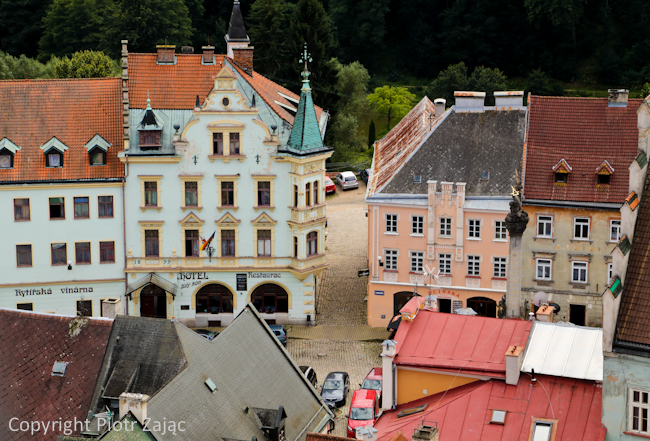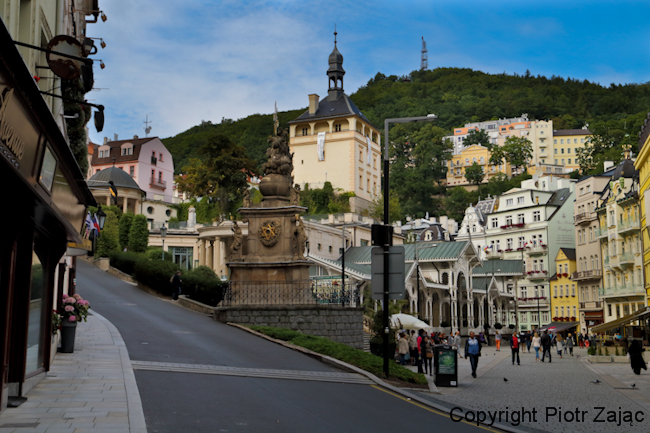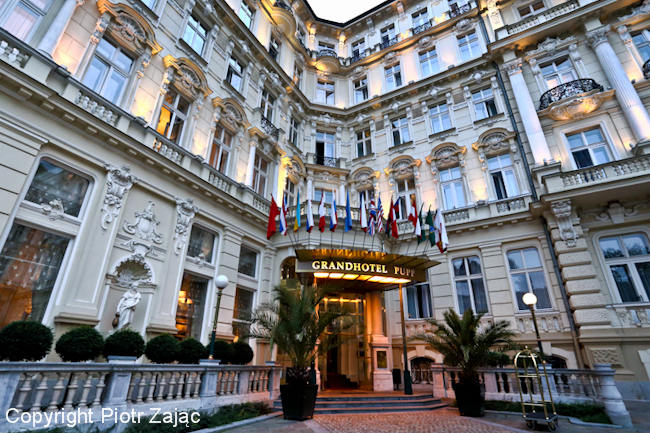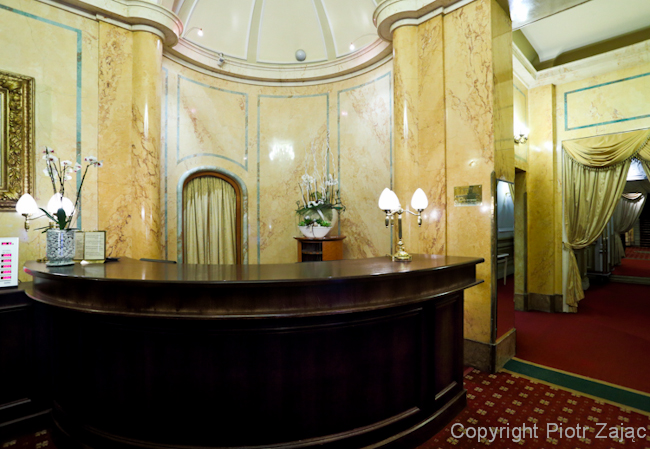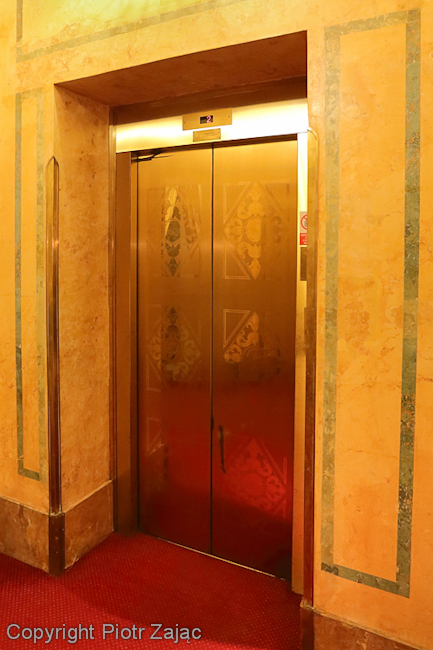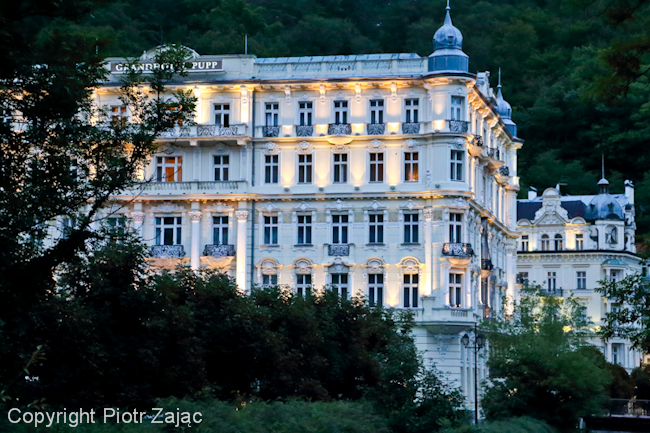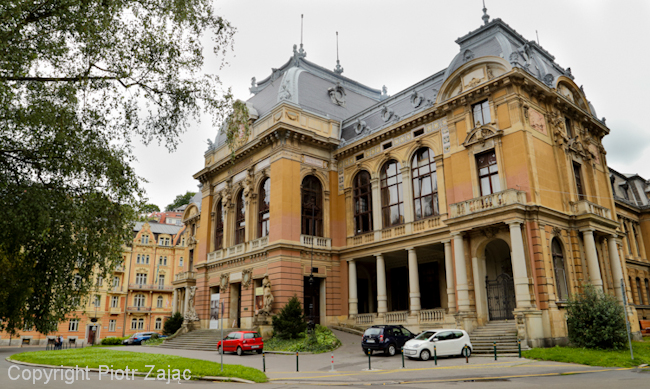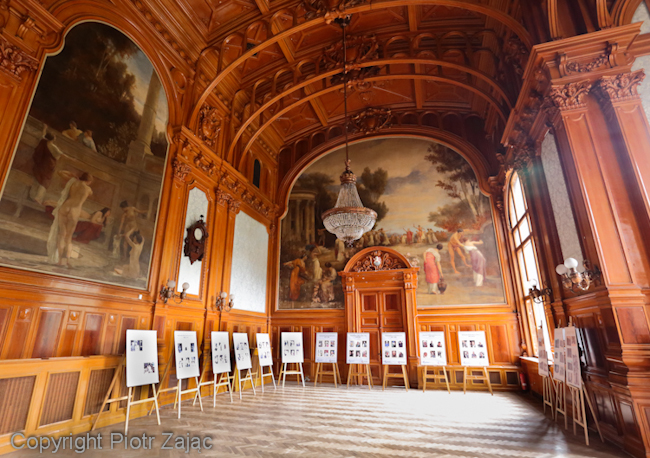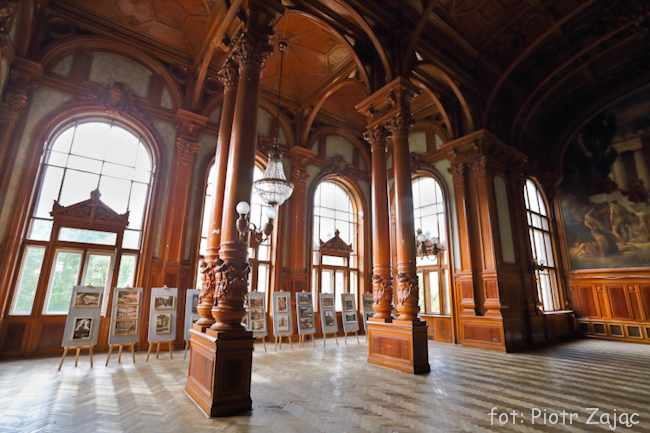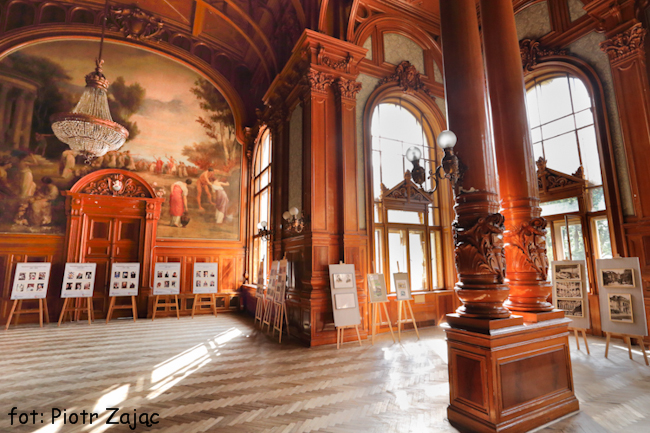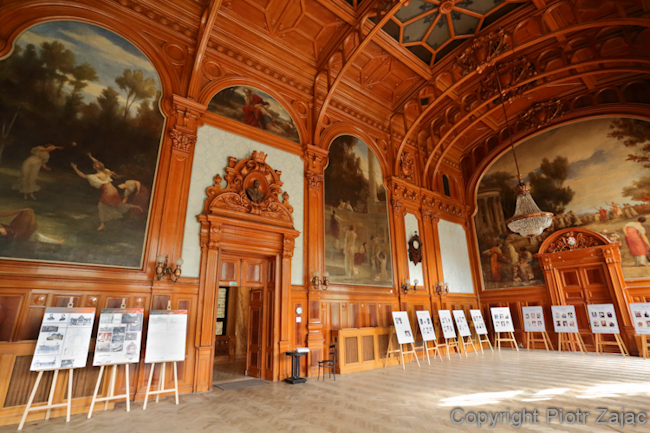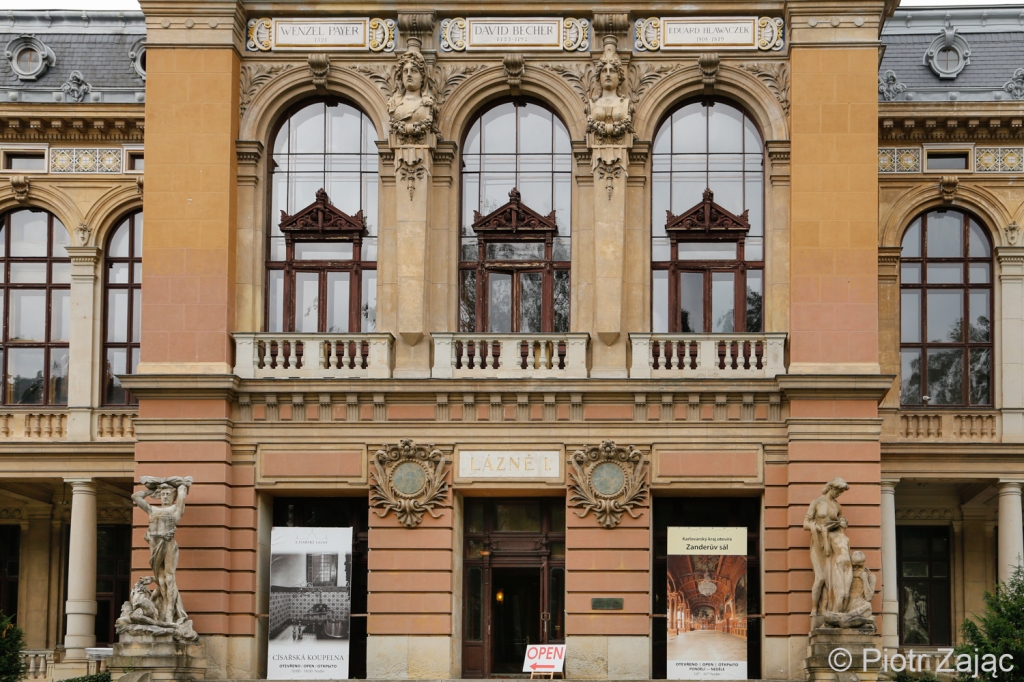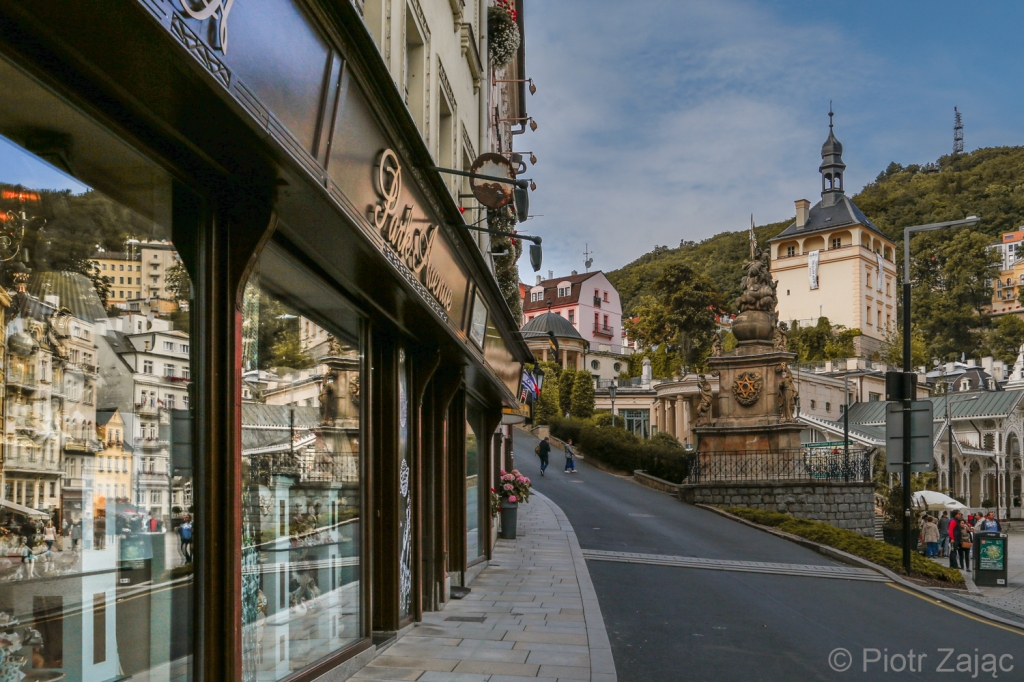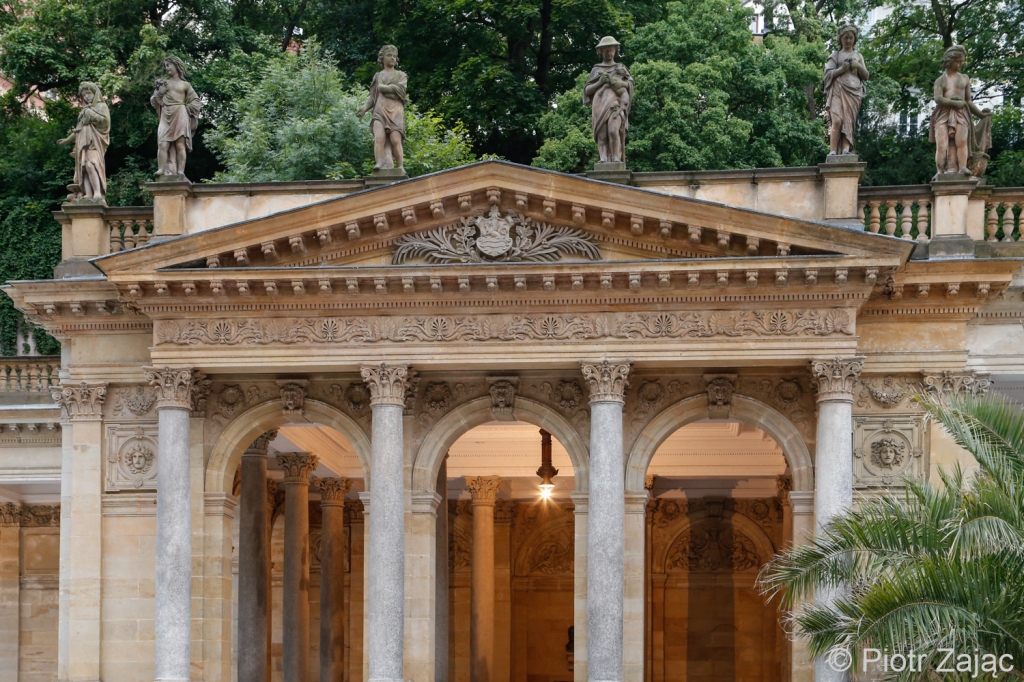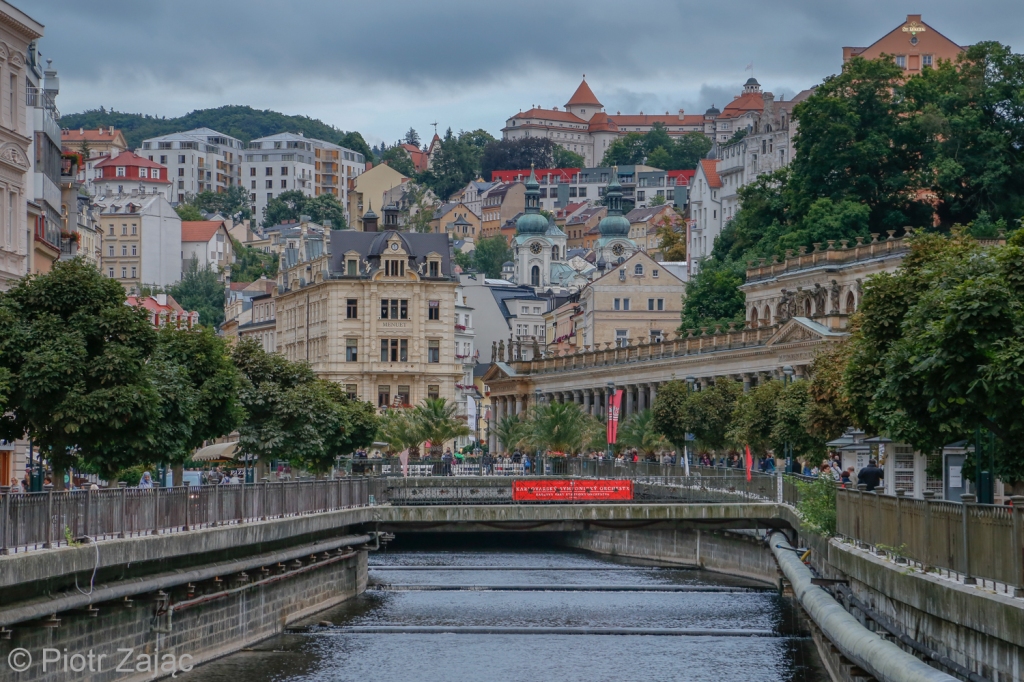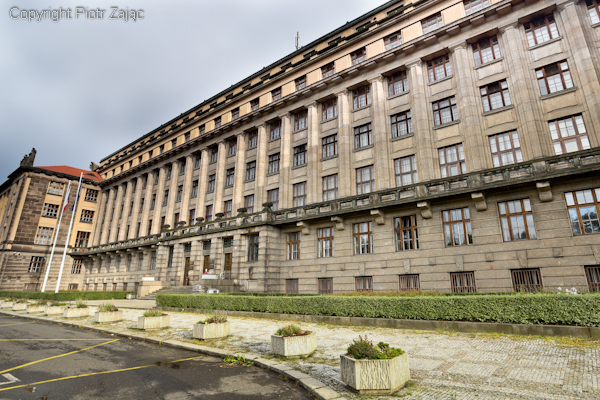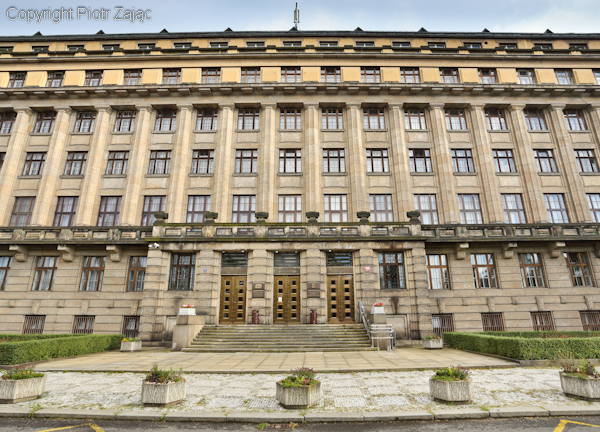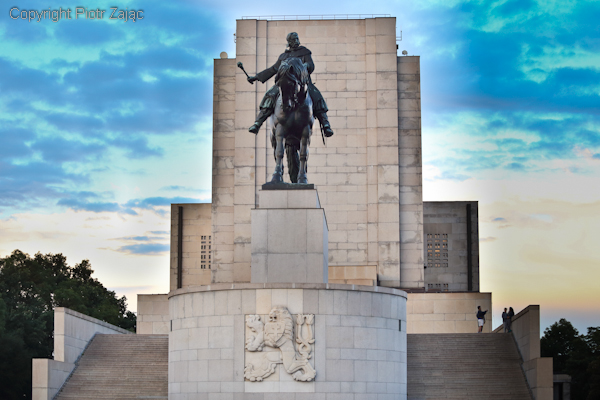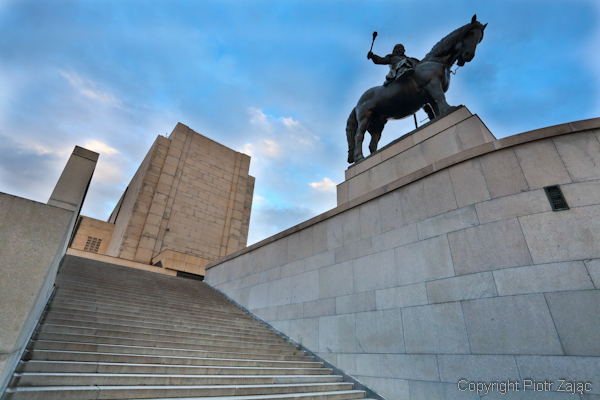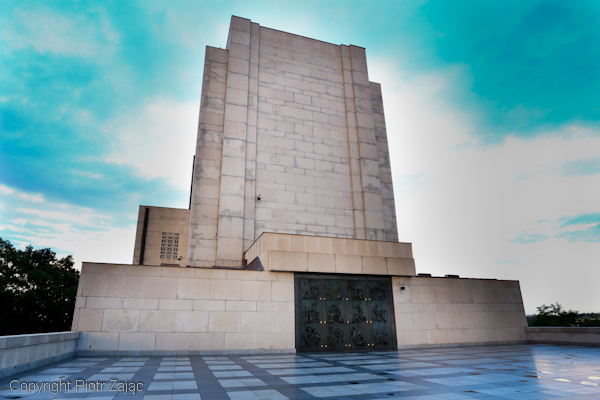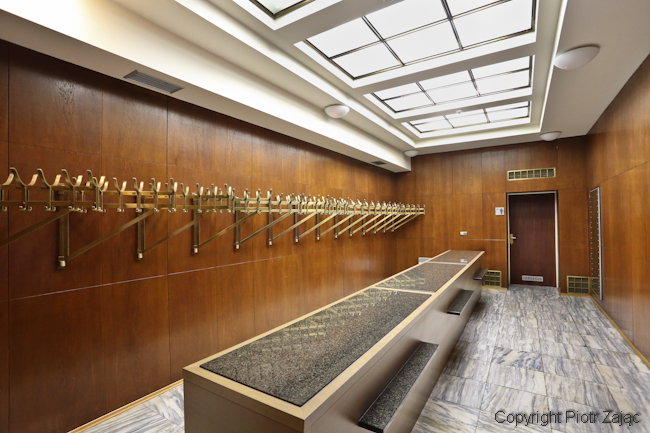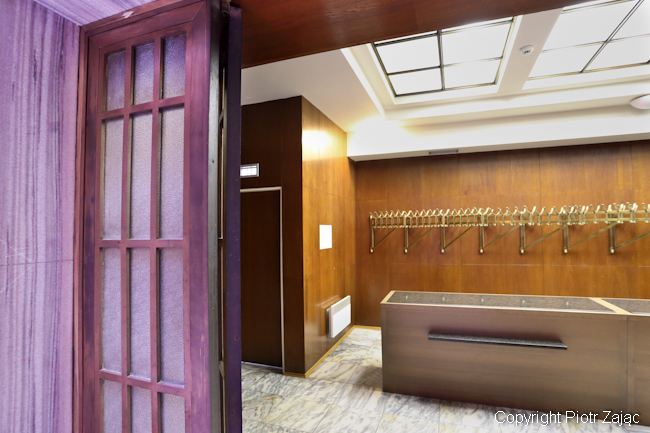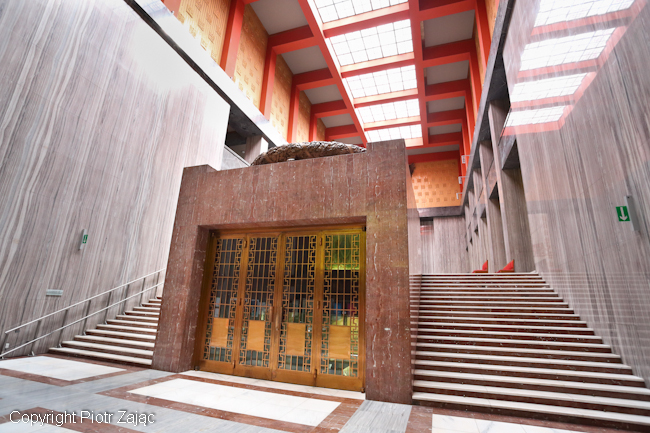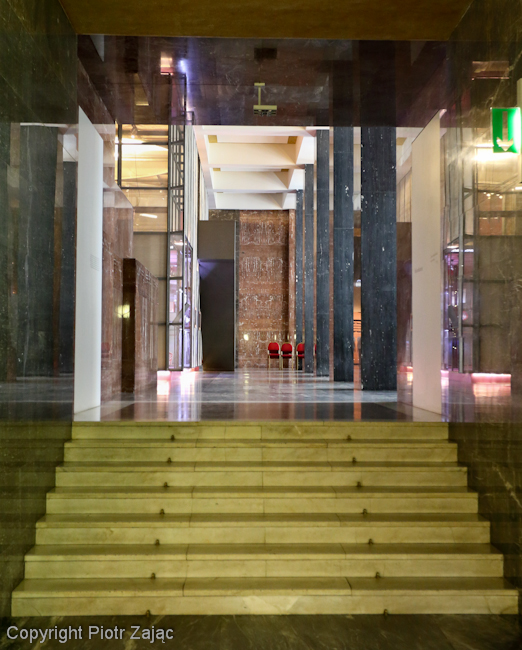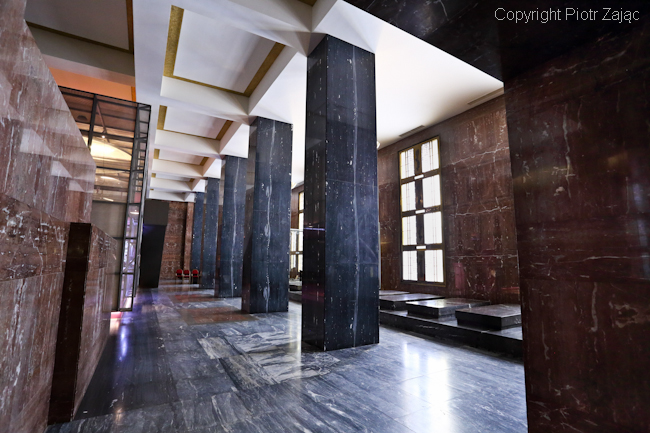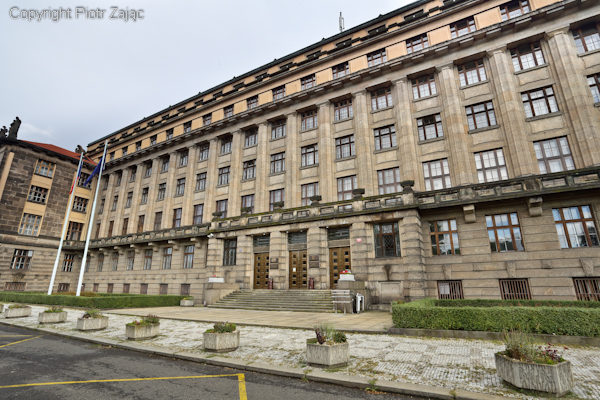Marc Wolff is a well-known aircrafts stunt pilot who has worked on many action movies including 12 Bond films. Find more on his official website www.marcwolff.net
 Piotr Zajac (bondlocations): You’ve worked as pilot on 12 Bond films and also on the London 2012 Olympics Opening Ceremony with James Bond.
Piotr Zajac (bondlocations): You’ve worked as pilot on 12 Bond films and also on the London 2012 Olympics Opening Ceremony with James Bond.
Marc Wolff: Yes. For the London Olympics we landed in the Queen’s garden at Buckingham Palace and also at Kensington Palace to shoot some interiors and close ups of the actors on the ground. We had a nice cup of tee in the palace.
Together with the Queen?
Not with the Queen, with her staff.
Your first James Bond movie was ‘The Spy Who Loved Me’. 007 was driving a white Lotus and you were chasing him in a Jet Ranger helicopter. How do you prepare for such a sequence? I guess it requires high precision.
Yes, it does but I think it also needs a good level of flying experience, especially of doing unusual types of flying work with helicopters. I was quite young then and although I had some experience and had flown helicopters for a year in Vietnam, I didn’t have a lot of film experience, so it was a new thing for me. I would prepare a bit different today than I did then. I had done a few little films starting in about 1974, we shot ‘The Spy Who Loved Me’ in 1976. I suppose I had been flying professionally for about 8 years at that point but nevertheless my film experience was limited. I didn’t really know what they wanted me to do until I got there. The big thing in those kind of situations is just to be careful and don’t make a drama out of something by having an accident. You need a good team of people around you watching what you are doing to make sure that you are doing it is safely. To give you a second opinion. I have a safety engineer, Stephen North, who I’ve worked since 1979. Stephen and I still work together today. He watches what I do and if he’s not happy he shouts at me.
There are many different types of aircrafts. I guess they are different also from the pilot perspective. I was wondering if the aircraft type in each movie is always determined already or you as a pilot have an influence on that decision?
For flying the camera I choose a helicopter with the right performance for the camera system they want to use, the number of people I need to carry and the location where I need to fly. If it is an action aircraft as in ‘The Spy Who Loved Me’ it is usually the director and the production designer who choose, with some input from me. For example on ‘Mission: Impossible – Fallout’ we looked at lots of different types of helicopters for Tom Cruise and the bad guy to fly. They liked the look of the EC 145 for the villain. In the case of Tom’s aircraft, they wanted to use a different type but I persuaded Tom that the aircraft that he eventually used was more robust and would be better suited for the kind of flying he wanted to do. I flew the bad guy helicopter rather than the camera helicopter for the main sequence although I flew a camera helicopter in the UK and Norway.
How do you prepare for a sequence with the helicopter so close to another object like the car in ‘The Spy Who Loved Me’?
You have to look at the locations and the clearance you have between the blades and the cliff, the car. Everyday is a little bit different because the temperature as well as the wind speed and direction are different so you have to judge that each day on its merits. You have to look through the camera once the camera position is set up and see where you need to be in the frame and where the cars are going to be in the frame. You talk to the director and the cameraman about what action they want to see and then work out how to make that story point as exciting as you can.
Your next Bond movie was ‘For Your Eyes Only’. You worked on the opening sequence. I know that there were models and real aircrafts but it was difficult to recognize them.
‘For Your Eyes Only’ was made in the days before CGI. Even today when CGI is used, a lot things always look better if there is a real element somewhere. The viewer can see the weight of the aircraft, the light reflecting off it at different angles, etc. If there are a number of shots at the beginning of the sequence with the real helicopter, then with the shots that are not real become more believable. In that sequence a lot of it was real. We had real man getting out of the back of the helicopter and getting to the front seat outside along the skid.We flew a real man in a wheel chair on the end of the skid. We dropped a real wheel chair down the chimney. We flew a real helicopter in front of a foreground miniature for the scenes to make it look like we were ‘flying in the hangar’. So there were a lot of real elements that made the process shots, and the life-sized mockup, look believable.
In ‘Octopussy’ there were some aircrafts sequences like the opening sequence or final fight in the air. Were you one of the pilots?
In ‘Octopussy’ I flew a camera helicopter for the train sequence. The stuntman, Martin Grace, was very badly injured because he was hanging outside of the train and he hit a post that was alongside the railway track.
To be honest I forgot that it was the sequence that required helicopter. Sometimes while watch the film I didn’t realize that the specific sequence was filmed from the aircraft.
Sometimes that is the beauty of this, not to realise that the camera is in a helicopter. The camera helicopter is just another tool in a cameraman’s bag of tricks to get shots from different angles and different perspectives. Sometimes obviously you are showing an establishing shot like the establishing shot of Shanghai in ‘Skyfall’. It is quite obvious that it is an aerial shot. It sets the scene for 4 or 5 seconds to show you where you are in the world. But a lot of times we use an aerial camera on a helicopter to get an angle that is difficult with a crane, for example. Some other methods may be more time consuming and therefore more expensive so, surprisingly, it can be less expensive to use a helicopter.
In ‘A View to a Kill’ you were working on the opening sequence in Iceland.
I flew the Russian-looking helicopter that was searching for Bond. I flew that helicopter from Southend in Essex in the southeast of England up to the Shetland Islands and across the Atlantic Ocean to the Faroe Islands and then from there on to Iceland. That was quite a trip. And then back again. We painted the helicopter in England before we went to Iceland. It was painted to like a Russian helicopter with a big hammer and sickel logo on the side. Actually it was a German designed helicopter so it looked a little unusual (in other words, not American or French who are the main civil helicopter manufactures in those days). When we were flying across the North Atlandtic we came across some big Russian fishing trawlers in the middle of the ocean between the Faroe Islands and Iceland. We circled around and they all waved to us because they thought we were Russians because of the big Russian flag on the side of the helicopter (smiling). We waved back and wondered if they thought they were being spied on.. While we were in Iceland there was an eruption of a volcano. We got into the local newspapers because we helped to rescue some people that were standed up on a glacier.
How long did it take to fly to Iceland?
It was a long, over-water journey for the helicopter. We had to put an extra fuel tank in the back of the helicopter cabin to be able to make the trip from the Shetland Islands to the Faroe Islands and from the Faroe Islands to the east coast in Iceland. It was a day’s flight (6 flying hours) from northern Scotland but it was long in terms of what that helicopter can do in one hop. We had a point of no return where we couldn’t turn back so our navigation system was important. It was in the days before GPS and we used a navigation system called Omega. We were about 50-100 miles north of the Shetland Islands and the system stopped working. We had a checklist of 10 things to check. My engineer Steve was reading off the checklist. Number 1 didn’t work, number 2 didn’t work and so on, we got to number 10 and it said: ‘change the unit’. (smiling) We had to decide if we could find the Faroe Islands on our own or if we should go back and change the unit. We turned around and went back to change the unit. We had to wait a bit in the Shetlands to get new unit from south of England. It was the safer option.
How do you remember working in Iceland.
There was a frozen lake with lots of icebergs at the bottom of a huge glacier. The icebergs were birthing, breaking off the glacier, and then floating around in this lake for several years until they melted small enough so they could get out of the lake over a sand bar and float out into the sea. We had to film among these icebergs. Every morning we started by flying a recce of the lake with the director Arthur Wooster. He was saying: ‘ This one looks good, we’ll go here, that one looks good too, we’ll go there’. Then we went back and landed and they took boats to go in amongst the to film. One day we were all sitting on an iceberg having lunch. The iceberg started to shift and tilt, becoming unstable; everybody had to get quickly into the boats and move away to a safe distance. It frightened everybody. Then, one day, they were filming close to the wall of the glacier where the icebergs broke off and almost got hit by one birthing. By the end of the film, on the early morning aerial recce, Arthur was saying: ‘I don’t like this one, I don’t like the look of that one’. Everyone had become very cautious.
We were stuck there for a couple of weeks in a fog because it was so cold there, it was like a microclimate. A lot of the area 10-15 miles away was clear and sunny but over the lake where we needed to film it was foggy. We had to wait for 10-14 days for this fog to clear. Everyone got bored standing around in the fog. We had a lot of styrofoam around. It was used as fake ice in the foreground of some shots The grips carved little horses out of these white pieces of styropfoam and we staged horse races. We tied a bit of string from the horse to a pole on a broom handle. There were like four horses and four people with strings on poles attached to the styrofoam horses. We had to wind up the strings with our hands. Whoever could wind up the string fast enough would get their horse across the finish line first. The grips ran a betting book and put odds on each contestant. So you could place a bet on who would win. Betting was illegal in Iceland in those days, so, of course, all the Icelanders loved it because they could bet on who who would win. That is how we kept ourselves sane during sitting in the fog.
In ‘A View to a Kill’ you were flying also around the Eiffel Tower in Paris.
That was quite a funny experience for me. I had a unique permission to fly in the centre of Paris but the permission required me to stay over the river Seine. The director wanted to relate the tower, the river, the city and the parachutist in one shot. The place the parachutist was supposed to land was between the tower and the river. To get a shot of the tower, the river, the parachutist’s landing site and the city of Paris in the background, I needed to be on the opposite side (the south side) of the tower, off the river, so I went around the back side of the tower to get the shot. When I landed back at the Paris heliport at Issy les Moulineaux, the police came and said that I did something called ‘bavarder’. I speak a bit of French and ‘bavarder’ means chatting or gossiping so at first I didn’t understand what they meant. I discovered it was slang and that I had ‘wandered’ off my permitted track when I went around the back side of the tower. He slapped me on the hand and said: ‘Don’t do it again’. Fortunately we didn’t need to do it again.
How do you prepare for such scene when the timing is very important?
The timing is critical. We talk about it in great detail; we discuss where the camera should be, and at what height, at each moment in the shot. So with the jump from the Eiffel Tower, I had to know how long he/she was going to free fall, how quickly the canopy would open and how long he/she would be under canopy. I knew the framing that they wanted for the opening frame so I had to work out the timing required to get from that position to the end-frame position within the timing the director wanted and the parachute gave us. When we have the opportunity to rehearse, we obviously do that. We always film the rehearsals because quite often it can be the best take. In this case we didn’t have such an opportunity. We just had to be in the right place at the right time, which is why they bring in someone like me rather than using a local pilot. I’ve got the experience and skill and the best chance of of getting it right first time. The Opening Ceremony of the London Olympics in 2012 was a good example of that. We had a two-minute, final run-in to get to the point where the 2 parachutists could jump from the helicopter into the stadium. We had marks that we would try to hit 3 or 4 times during that two minutes; marks for when the television cameras would see us, marks for when the audience would see us, marks for the parachutists which depended on the wind speed and direction. We were not hitting these marks accurately enough. We would finish our rehearsals at around 9:30 at night, land the helicopter back at our base, drive to the Olympic stadium, go up to the conference room and sit around a table with 50 people at until one o’clock in the morning. Everyone had their opinion why the timing wasn’t working. We were using a very sophisticated helicopter that, in theory, could do everything automatically. The Olympic Committee was given the helicopter, an Agusta-Westland 139, free-of-charge, by the manufacturer in turn for the publicity. I was sent to Italy for a month to learn to fly it. We used 2 two pilots for safety. I was assigned to fly with a very experienced test pilot from the factory who knew the aircraft intimately. I spent six months with him, planning, training and testing the jumps from different heights, making sure the special, quick-opening parachute would open safely under the helicopter and insuring that we could hit the target landing area accurately, from different heights, and in varying wind conditions. We did over a hundred test jumps before we actually came to that hero night. In the end, even on the last day at 5 o’clock in the afternoon, a couple of hours before the beginning of the ceremony, we were still rehearsing because we had a new, northerly wind direction, different than any we had had on any of the previous rehearsal days at the stadium which meant we needed a whole new set of marks. The test pilot wanted me to use the computer in the helicopter to get the timing. I tried it this way but it wasn’t accurate enough. At the end of the day it was my responsibility to deliver what Danny Boyle wanted so over a cup of tea in the afternoon I had to say: ‘Look, I’ve got to do this my way, visually’. ‘You have to help; you can’t tell me: I’m going to be early or late to my mark. You’ve got to tell me exactly how many seconds I have left. Tell me I’m 45 seconds away from checkpoint 007 or I’m 30 seconds or 10 seconds. I’ve worked this way all my life, with your help, I’ll hit that mark if I know how much time I have left until I get there and I’ll be more accurate than the computer’. The same applied to our height which was critical for the parachutists. The last week or ten days we were doing live rehearsals at the stadium, sometimes with an audience, sometimes without, but we never did the actual jumps into the stadium with the crowd there so as not to give the game away. In the end I did it visually and the one time we got it perfect was the one that counted, that last jump on the hero night at 9:30 pm on the 29th of July 2012.
But you did it.
We did it, finally. (smiling) It was a team effort and a big relief to have achieved it. Everyone was saying: ‘You must be very high’. I said, ‘no, I was just relieved’. It was big weight off my shoulders.
What about the sequence at the Golden Gate in San Francisco? Did you work on that as well?
I flew the camera helicopter. We filmed background plates in San Francisco. It was great fun to fly around this famous bridge. My father, who was a civil engineer, had worked on the design of the other big bridge there, the San Francisco-Oakland Bay Bridge.
Then you worked on ‘The Living Daylights’. There was a fight in a Hercules aircraft. I know that part of that sequence was filmed in the studio.
We also did some live action filming at Quarazate Airport in Morocco and in the air over the desert nearby. I was flying in the Moroccan Air Force Hercules coordinating the aerial stunt sequence. There was a stunt crew at the back of the Hercules performing a fight scene on the open, ramp door and a cargo net which was flapping behind it in the wind. We had a camera airplane flying in formation alongside us filming the fight. The cockpit of the Hercules is like a big office so I could move around, look back into the cargo area at the fight and lean in between the two pilots and look out through the windows at the camera plane and talk to the director and camera crew on the radio. They could cue me when they wanted certain things to happen which I would then relay to the Hercules pilots and the stunt crew. In the sequence Kara Milovy was meant to be flying the airplane and Bond was fighting at the back on the open, cargo-door ramp. Bond was shouting to her to close the ramp door. She was playing with the levers in the cockpit trying to sort out which switch operated the ramp door. Instead of closing the ramp door, first she shut one of the engines down by mistake, then she made the flaps go down, then the landing gear, Bond was getting more and more frustrated, eventually she found the right lever to close the door at the back. It was quite humorous in the cockpit. The Moroccan Air Force were trained in the USA because the Hercules was an American aircraft so they all learned to speak English, they also spoke very good French and obviously Arabic, which was their native tongue. I was standing behind the pilots coordinating on the radio between the camera airplane and the Hercules. The Hercules has 4 engines. The engine that the director wanted to shut down, from the camera point of view, was the engine which powered the main hydraulic pump. The hydraulics control the operation of the the landing gear, the flaps and the ramp door. Because that engine was shut down, they had to use the auxiliary hydraulic motor which was driven by one of the other engines. The auxillary hydraulic pump wasn’t as powerful as the main pump and it began to overheat after several takes of this chaos. The flight engineer, who was sitting behind me, kept complaining to the pilots: ’The pump is getting very hot! It is getting very hot!’. They were all arguing. At first they were speaking in English in a very polite way, then they started arguing a bit and switched to French. I speak French so I could still understand what they were saying. When the conversation heated up and they started to speak in Arabic I knew it was time to shut up, stop asking them to do things, sit down in my seat and put my seat belt on. (smiling) At the weekend on our day off, I was invited to a barbeque with all the Air Force crew and pilots. The engineer was cooking. All the pilots were giving him a hard time saying: ‘No, no, watch out, the fire is getting too hot, you are overheating the meat’. They were getting their revenge and teasing him because he had been giving them a hard time about the over heating hydraulic pump during the filming.
I’ve seen a documentary about your work on ‘Tomorrow Never Dies’ called ‘Shoot to Thrill – The Marc Wolff Story’. It was very impressive, especially the opening sequence in the air with the dog fight between 2 jet fighters.
I flew the camera jet and a camera helicopter and coordinated the flying aspects of the sequence. The two jets in the story were Aero L-39 Albatrosses designed and built in the Czech Republic. The camera jet was a French Corvette, business jet. Inside the Corvette we fitted a camera system with a periscope that went down through the belly of the Corvette. It was operated by Adam Dale, the aerial cameraman, and could look 360 degrees in all directions. Flying with us was the 2nd unit director, Vic Armstrong. We shot the sequence in the Pyrenees south of Toulouse. We used a helicopter when we wanted to have a static platform in the air and see the jets whizz by.
How do you prepare for such sequence when you fly so close together. Do you work with your team?
That was probably one of the biggest Bond jobs for me. I can’t remember how many months I worked on that, but it was a long time when you count the prep time to organise the jets and find the flying locations. Unlike ‘The Spy Who Loved Me’ when I came out and knew nothing about what I was going to do until I arrived, on ‘Tomorrow Never Dies’ I was given a lot of time to prepare for this sequence. This was in part because of my previous relationship with the director, Roger Spottiswood. I chose the airplanes, I cast the stunt pilots who were to fly the L-39s, Mark Hanna and Rolf Meum. I went to the Czech Republic to look at the airplanes and make sure they had the right performance and make sure they could land and take off at that tiny little airstrip at Peyrousoude in the Pyrenees.
How did you manage to use military aircrafts on film set?
Those aircrafts came from the factory in Czech Republic that made them. These were aircrafts that were used by various military forces, but they were civilian aircrafts from the manufacturer. Part of my job was to get permission to bring them into France, to operate them there, to fly them close to the mountains and to get permission for my pilot to fly as a co-pilot. They were two seaters with one seat in front of the other. I had one pilot from the factory and one of my pilots who was used to do a formation flying and worked in films. I flew as a co-pilot in a camera jet which came from the company that was based in Toulouse and did a lot of aerial filming for Airbus, which has big factory near Toulouse. We used their camera system. I did the formation flying and they landed it and took it off from the airport. They were there in case of some emergency because I didn’t know the airplane very well, but I knew how to fly in formation.
How long did it take to film that sequence?
We had several months of preparation and I imagine we were there for a few weeks.
I guess it was difficult to film that sequence. I think it is worth to undestand the whole effort behind such scenes, especially nowadays when viewers got used to CGI and may not see how brilliant it really was.
This was sort of pre-CGI too. Most of it was real. The missiles that fire and explode on the cliff face were CGI obviously but all the flying was real. I remember filming the navy frigate sailing at sea as an establishing shot before they cut inside to the control room. In the storyboard we had a picture with no horizon and a drawing of the ship at sea. The ship was about an eighth of the frame. I was being sent down to Plymouth with my cameraman, Adam Dale, to shoot it. I asked the director, Roger Spottiswoode: ‘Do you want this exact composition from storyboard’? You need to be careful with storyboards. If you’re gonna film for Steven Spielberg or Ridley Scott, they will give you the storyboard and you need to come back with that exact framing. They have a very specific idea how the shots should look: the composition and how many seconds the move should be. In this case Roger said: ‘This storyboard is just to show the producers and the studio that we will have a shot of a ship here. Just get me an interesting and exciting establishing shot of the ship’. We were filming in the English channel with the ship sailing southwest into the wind and the big sea, travelling as fast as it could so the big waves crashed over the bow. We were flying downwind, in the opposite direction, straight towards the bow of the ship. We did a take flying as low as we could, and fast, about 3 feet above the sea, trying not to hit the waves. There were big swells and steep waves. The Frigate was going as fast as it could, 20-25 knots, and we were flying at about 100 knots towards it in the opposite direction. We had a gyrosablised camera system mounted on the nose of the helicopter. At the last possible moment we pulled up over the bow of the frigate and continued climbing over the bridge and then the mast, tilting down the camera as the mast came through frame. At that point the were going to cut to a shot inside the control room of the frigate. So that was the shot we gave them and it couldn’t have been more different from the original storyboard. The timing of the move was critical. We were on a wide angle lens to show the scale of where we were at sea but that meant we needed to be really close to the ship to feel its size, weight and power. We did quite a lot of takes of it, getting closer and closer each time. I wanted to keep the ship sailing in the same direction, ploughing into the heavy seas and was wondering how long it would be before they had to turnaround so as not to get too far from Plymouth. I radioed the captain as asked him, ‘How long can you keep going in this direction? Do we have to turn you around and move you back?’ He said: ‘I can keep going until I hit the east coast of America’. (smiling) That was enough for us.
In ‘Tomorrow Never Dies’ you were also filming motorbike chase.
They were going to film that in the Republic of Vietnam. At the last minute they changed the location to Thailand. I had worked in Thailand a few times, on Air America and Good Morning Vietnam and my daughter, Lily, was born there in Chaing Mai when we were shooting Air America. We were based in Bangkok on Tomorrow Never Dies and also shot down in the south in the islands near Phuket. In Bangkok the hotel was on the river and the 2 helicopters were based at a heliport that was also on the river. We used to commute to work in a long-tail boat, avoiding the terrible Bangkok traffic. It was great fun. We would meet up on location and walk over the roof tops with Vic Armstrong and the second unit team. He would talk us through the shots, showing us where the ground camera positions would be and where he wanted the action helicopter and the camera helicopter. My camera assistant, John Marzano, ended up being one of the gunners in the helicopter. The gunners had to be careful because the guns fired real blanks and we needed to make sure the spent cartridges didn’t go into the engine intake or hit the rotor blades, especially the ones at the tail. The scene with the motorbike jumping over the top of the helicopter was filmed in the studio. Pinewood was busy, so they built the rooftop set in an old aircraft factory in Radlett, north of London. The helicopter was a life-sized mockup mounted on a hydraulic rig and track. I flew a camera helicopter there.
In ‘The World Is Not Enough’ you were filming the boat chase on the Thames in London.
That was quite fun too. Normally you have to stay 1000 feet above the river. Sometimes you can get permissive on to go down to 500 feet or even a bit lower. We wanted to fly 20 feet above the river. To do that we had to put a number of special safety precautions in place: stop all the traffic on the river, close the bridges that we wanted to fly over, provide a safety boat with divers, and keep 3rd parties and the public well away. We had to make sure that the Parliament wasn’t in session so we wouldn’t disturb their debates. We flew very, very low down the river chasing the boat. The bridges were closed to the public but we had our stunt doubles walking across the bridge and a few cars crossing over so the location looked alive and real. We were flying at the height of lamp posts on the bridge or between lamp posts even.
There was another interesting location in London above which you were flying – Buckingham Palace in ‘Die Another Day’.
That was quite complicated because the height we had to get for the parachutists had to be about 2500 feet. Normally we were not allowed to fly in that area over the palace, and not higher than 1000 feet because of the air traffic going into Heathrow Airport. To give us permission to go to 3000 feet they had to divert the aircrafts, so there was a lot of coordination required to organise and film that sequence.
In this film you were also filming a car chase on a frozen lake in Iceland.
It was the first time I’ve ever seen the northern lights, because we shot that in the winter when the lake was frozen. I think it was in February.
How did you prepare for such sequence to coordinate cars and camera?
In that kind of thing we did a lot of rehearsals to get the camera in the right place, passing between the icebergs. Getting different sizes: big wides to show the beautiful location but also getting close to the car to show its speed and who was in it.
Who decides about the focal length of the camera lens for each scene?
There is the director, a director of photography and then, in the helicopter, an aerial cameraman. We transmit the camera image from the camera down to the ground so that the director can see what we are filming live. This allows him to tweak the shot if he wants. So it is a combination of all of them. Usually in the camera helicopter we have a zoom lens so we can go from 25mm to 250mm or something like that. Sometimes we put doublers on the lens to get closer, but in the sequence like that we can get very close to the car. We can get the lens 5 feet away from the car depending on how much it is manoeuvring. If the car is spinning or weaving about then we need to leave it some space. We can get very close to it because we are not endangering others there, especially members of the public. We only have us and the stunt driver to be careful about, sometimes there are also camera crew on the ice we need to look out for. We rehearsed it and we knew what the cars were going to do and they knew what we were going to do.
From cold Iceland you moved to warm Bahamas where you were filming opening sequence for ‘Casino Royale’?
There were wide shots to show the whole geography and close framing to show them running on the top of cranes. I provided the crew and helicopter equipment but I didn’t fly on this location because I was on another film at the time.
But you were filming the establishing shot of the yacht sailing to Venice.
Yes, I had flown in Venice a number of times. It is prohibited to fly low over the old city but I was over the water that was empty except for some boats so I thought I was fine. I was fying so low that little water taxis had to get out of my way, about 3 feet above the water. This enabled us to see the yacht and the cast while also framing the city in the background. Next morning I was told that I had a call from aviation authority. I had to ring the head of the Italian Civil Aviation Authority at Venice airport. He said: ‘Mr. Wolff, before you say anything, I have a picture of your helicopter filming the yacht on front page of the local newspaper. You were supposed to be 300 meters high but it looks like you were 3 meters high’. Actually I was a little bit lower than 3 meters. (smiling) So I got what we call in Britain, a bollocking. I was told not to do that again.
You were also flying very low over Garda lake when filming establishing shot for the opening scene of ‘Quantum of Solace’.
That was an interesting one. We were flying as low as we could over the water. Second unit director Dan Bradley said: ‘Is that as low as you can go?’ I circled around and said: ‘Look’. You could see that the back end of the skids had left a trail in the water because they were dragging along the surface. When you are flying at the certain speed the nose is a little bit higher. The back end of the two skids had dragged into the water and had left their mark. I said: ‘Dan, I don’t think we can get any lower, unless we become a submarine’. (smiling)
Were you also filming the car chase along the lake?
Yes. Then we did some filming in Italy for the sequence with Daniel Craig coming to Talamone. Establishing shot of the boat. They wanted us to start very close to the boat so we could see Daniel. I’d worked with Daniel a few times by then. I did ‘Layer Cake’ with him. He was always very nice to me. But he got a bit angry there because I put a little bit of spray on him. I was a little bit too close. It is always difficult because you don’t want to see that the helicopter is there and you don’t want to spray the water into the camera or the frame, but sometimes you want to get as close as you can, so you get closer and closer and you may be too close. So I got a message back: ‘Daniel is not very happy, you sprayed him with water’. I said: ‘Sorry. We won’t come so close next time’. (smiling)
You were also working on ‘Skyfall’. How do you remember working with the director?
Sam Mendes is obviously a wonderful director. He had a vision of the shots he wanted but sometimes needed to tweak them once he saw them for real. Another aerial unit had been sent to Scotland to film James Bond driving along the road on his way to the Skyfall house. Sam wasn’t very happy with what he saw. In fact, what he wanted was there but they had shot so much material that he got fed up watching stuff he hadn’t asked for. Usually when you do these things you shoot what the director wants first and then if you have another idea you want him to see, you shoot it later. I had to go to to a big meeting in Istambul in Turkey to make sure that these things wouldn’t happen again. That was because I was going to film on my own, without another director, the shot with the yacht at sea with Bond and the girl going to an island where the villain was located. We filmed the shot the Sam had described that he wanted. The director sometimes visualises these things but he doesn’t know exactly what he likes or if it works, until he sees it. The second unit had to go back end re-shoot some scenes because he didn’t like what he got. Anyway we did the shot of a boat approaching the island. The boat was sailing in the right direction for the light, there was a clear horizon, it was the right time of day for the light, it was the move he asked for, but I was worried that it didn’t feel right and that when Sam saw it he might not like it. We did it 2 or 3 times until we were happy with the take. It was exactly what he’d asked for. I said to Greg Wilson, the executive producer, who was with me: ‘I think we’ve got what Sam asked for Greg. Are you happy?’ Greg said ‘Yes’. I also said: ‘I think we should give Sam a couple of other options in case he might like them better’. After all, we were there, the yacht was there, the weather was good, it would be less expensive to shoot some more versions now than come back the next day if Sam didn’t like what he saw. So we did a couple of these other moves. Greg liked them and thought they were nicer but it was Sam’s choice, obviously. We finished the shooting, the sun went down and then we’ve set up a live link to Sam in Instanbul, show it to him at the end of his day. After seeing the first few takes he was not happy. I said: ‘We did a couple of other things, have a look and see. You might like them better’. He looked at the stuff that we shot later and he was very happy with that. So we wrapped and went home.
Were you filming also the final fight sequence with the helicopter attacking the Skyfall mansion?
Yes, I flew the camera helicopter.
Your last Bond movie so far was ‘Spectre’. Were you involved somehow in filming the opening sequence in Mexico?
I did some consultancy work on that sequence but I didn’t go to Mexico. I filmed the train sequence in Morocco with the camera helicopter.
You also filmed the final sequence with boat chase in London. Similar to ‘The World is not Enough’ you were flying above the Thames.
Yes I did. It was a night shoot. We made a temporary heliport next to Vauxhaull Bridge where we could land the action helicopter because we wanted it to be close to the set. The light was quite critical and we didn’t want to waste time flying back and forth to the refuelling site which was 10 minutes away outside of London. We got a very unusual permission to land on a very small bit of ground right on the edge of the river in a little paved area, the size of a postage stamp. It was close to Vauxhall Bridge and opposite the MI6 building which features in the sequence. Being based here allowed us to be very efficient. We had to close a lot of roads, three bridges and the Thames river to traffic to protect the public. There was a lot of disruption to traffic in the centre of London even though it was in the middle of the night. We wanted to minimise that disturbance and the noise much as possible. Like in ‘The World is Not Enough’ this shoot involved a lot of organization and meetings with the authorities for me. I flew the camera helicopter, I cast the pilot who flew the hero aircraft; a pilot with the right personality and skill level. I found a hero helicopter that had the right look for the production designer and Sam Mendes but one I knew came from a company that would be helpful. A lot of these bigger helicopters are flown by people that don’t do unusual flying. I needed a pilot who would be flexible enough to work the unusual, long hours as we do in filming and to do the flying he had to do in that sequence with a certain amount of panache. I was lucky I found a helicopter that they were happy with and a pilot I was happy with.
You didn’t work on ‘No Time to Die’, but you’ve worked as second unit director on ‘Bohemian Rhapsody’ with Rami Malek who played the villain in the latest Bond movie.
I directed a short sequence on Bohemian on the additional photography unit. After the film was finished, it was audience tested and reviewed. The producers decided that some additional material was needed. Bryan Singer had directed the sequences for the Live Aid concert at Wembley early in the schedule. There was a lot of energy and it was very good. Dexter Fletcher, who finished directing the film after Bryan Singer had left, was doing the additional photography but he was also in prep for ‘Rocketman’. They needed a DGA director to replace him. The DGA is the American directors union. (Directors Guild of America) They couldn’t film the cast on stage without a union director on the set. The production manager knew that I had a DGA ticket and I had worked with Dexter on couple of films before so he new me. They rang me and asked if I could do it. I had just had surgery on my knee, the day before so I was walking with crutches. They called and asked me if I could work for them the next day. I said: ‘yes for sure’. What do you want me to do?’ They said: ‘There isn’t much to do because the cast have been together for months’. At the real Live Aid concert the band hadn’t been together for a couple of years. They needed some scenes of them being a little more tentative and a little bit unsure of themselves at first, before the old magic kicked in. That was half of my day. I also did a pub scene with people siting around drinking and talking, at first not paying much attention to the music until Queen came on stage. By the end of their set everyone in the pub was up dancing and rocking to the music. Queen’s performance at Live Aid is still rated as the best ever gig of that nature.
Do you think that Rami Malek will be good as a villain in ‘No Time to Die’?
He has got that Bond villain face. They always cast people with a special look and I think Rami has it. Woody Allen says: ‘If I cast the film correctly I don’t have to worry about directing the actors.
Thank you very much for telling me so many interesting stories from films sets.
June 1st 2020
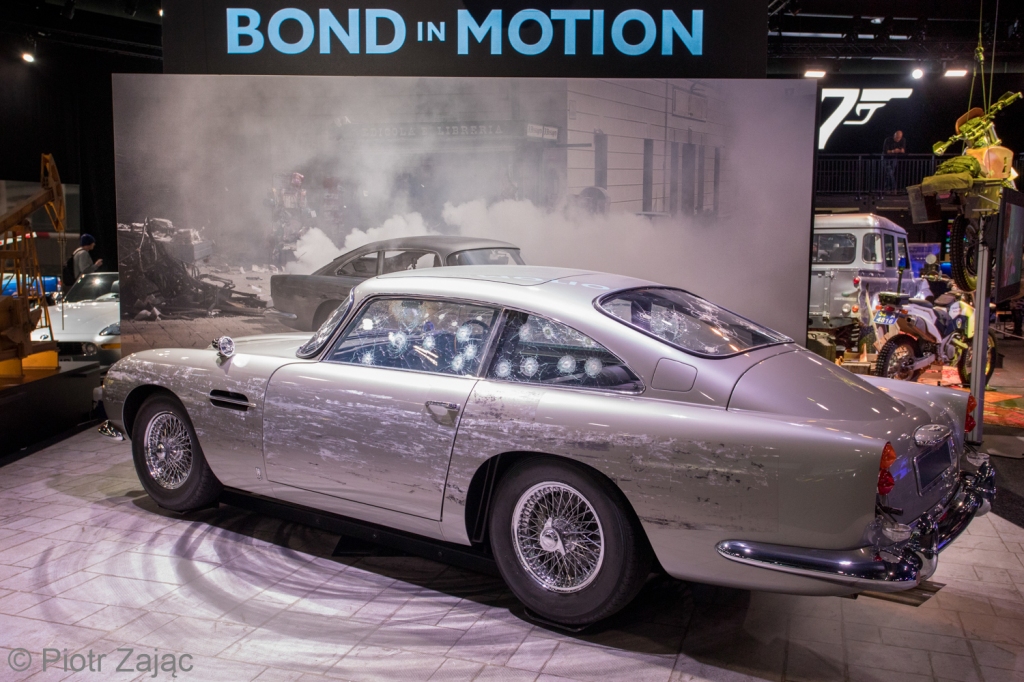

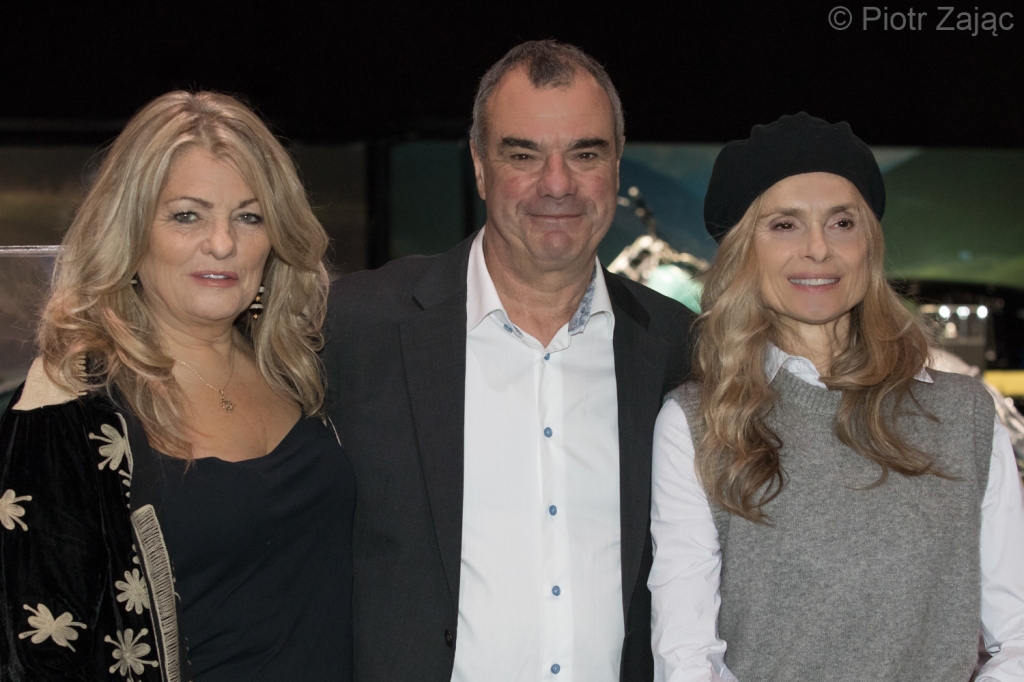






































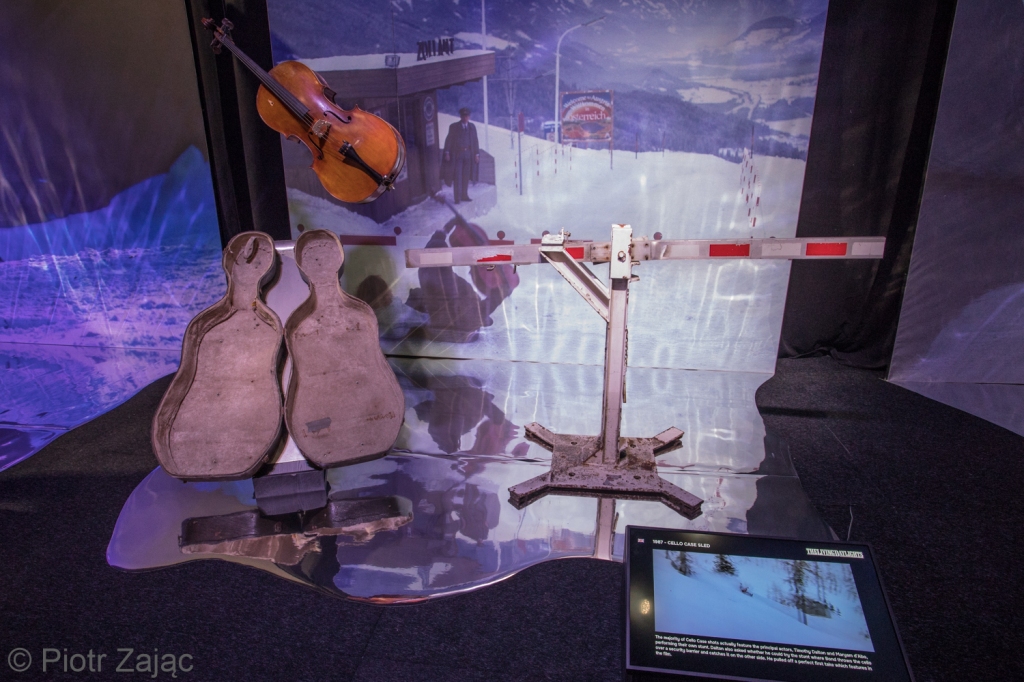
















 Piotr Zajac (bondlocations): You’ve worked as pilot on 12 Bond films and also on the London 2012 Olympics Opening Ceremony with James Bond.
Piotr Zajac (bondlocations): You’ve worked as pilot on 12 Bond films and also on the London 2012 Olympics Opening Ceremony with James Bond.



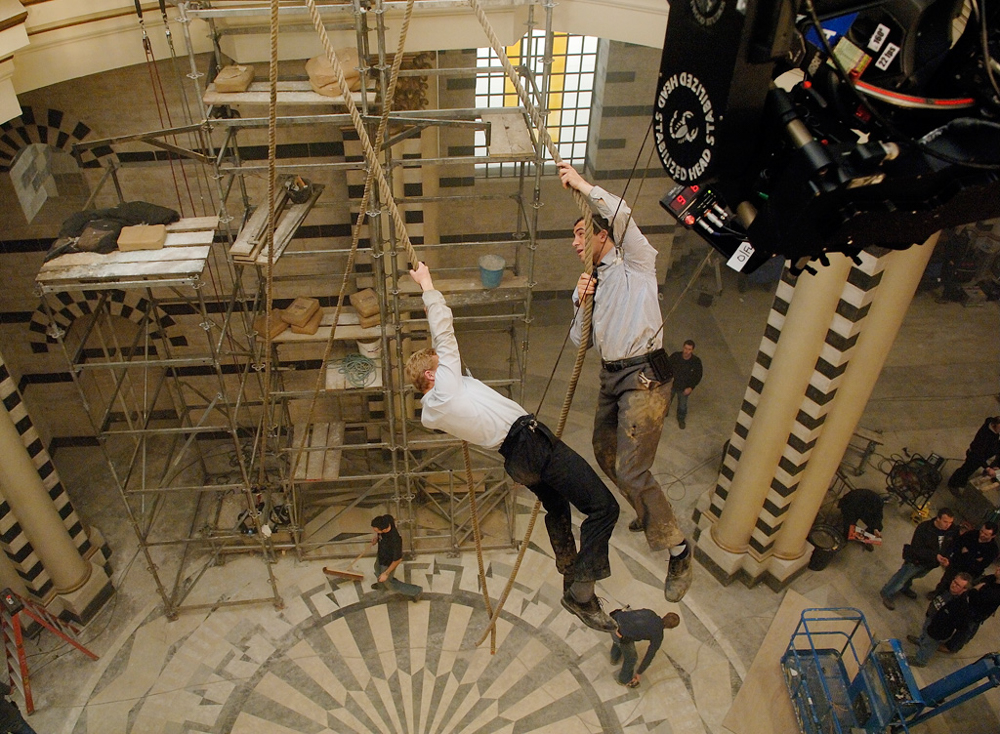




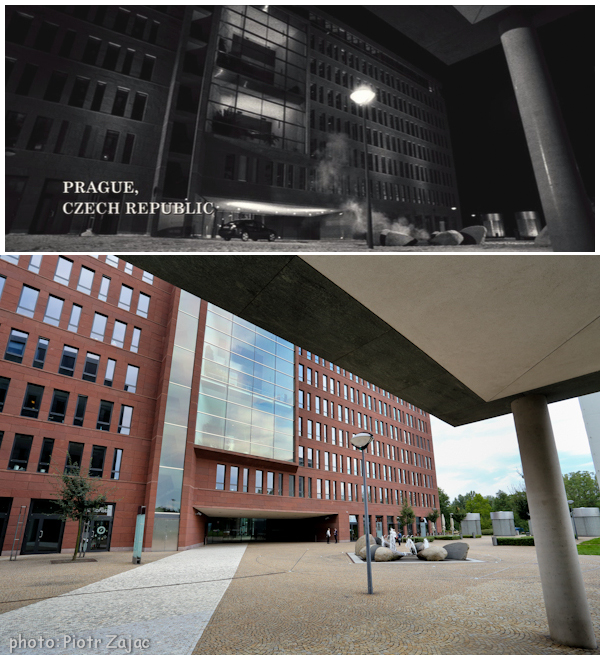
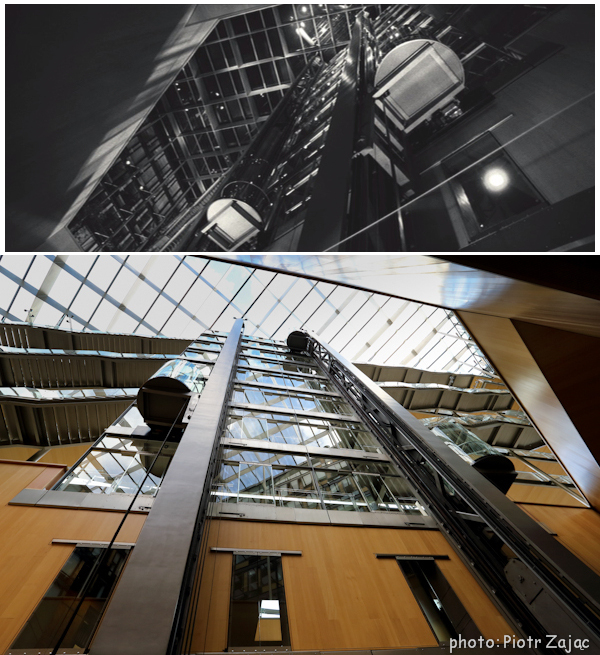
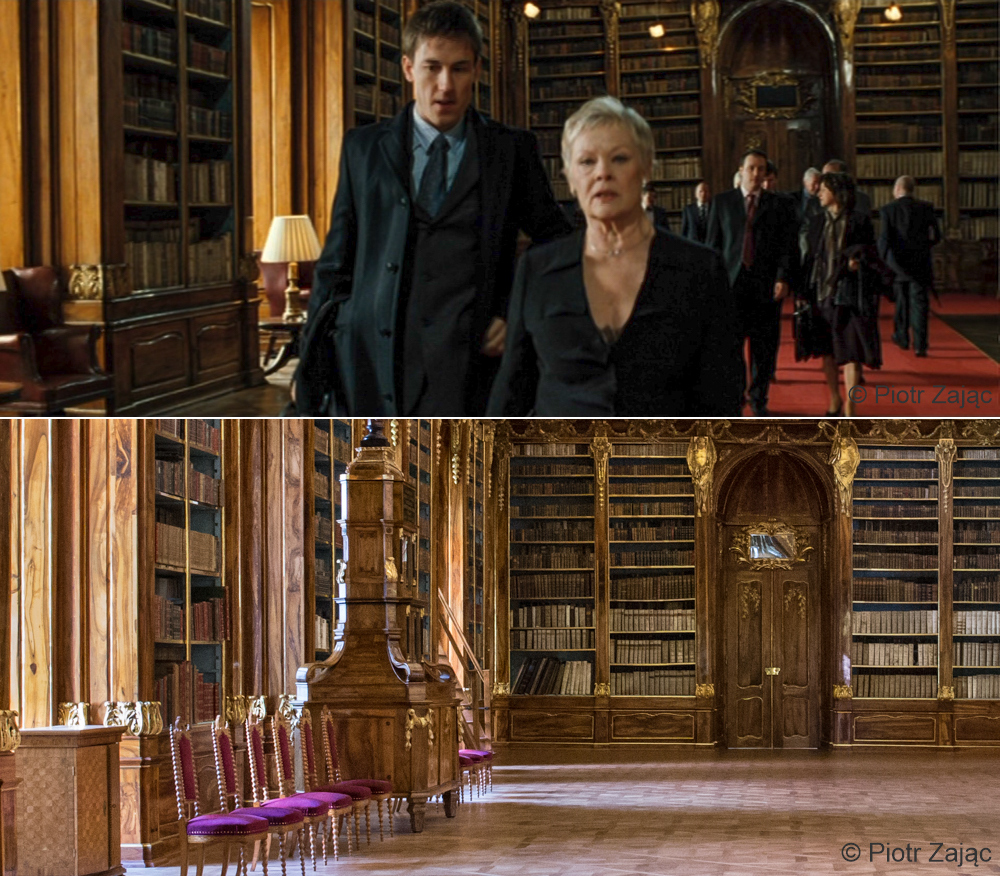
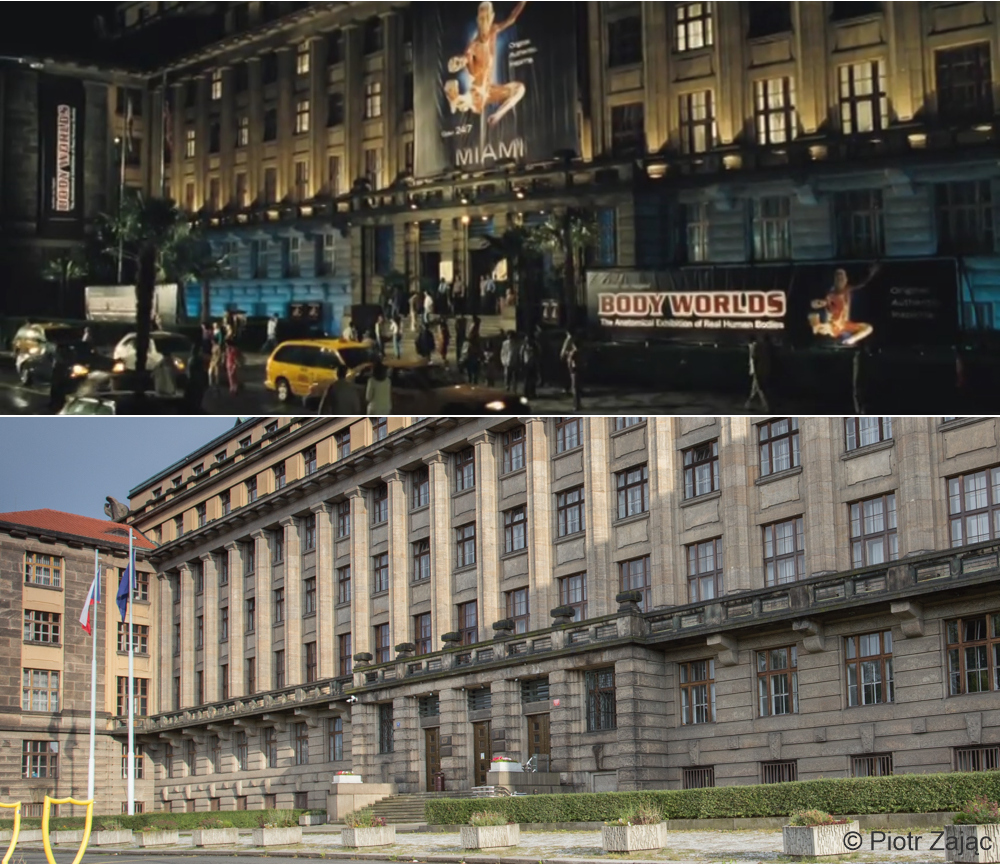
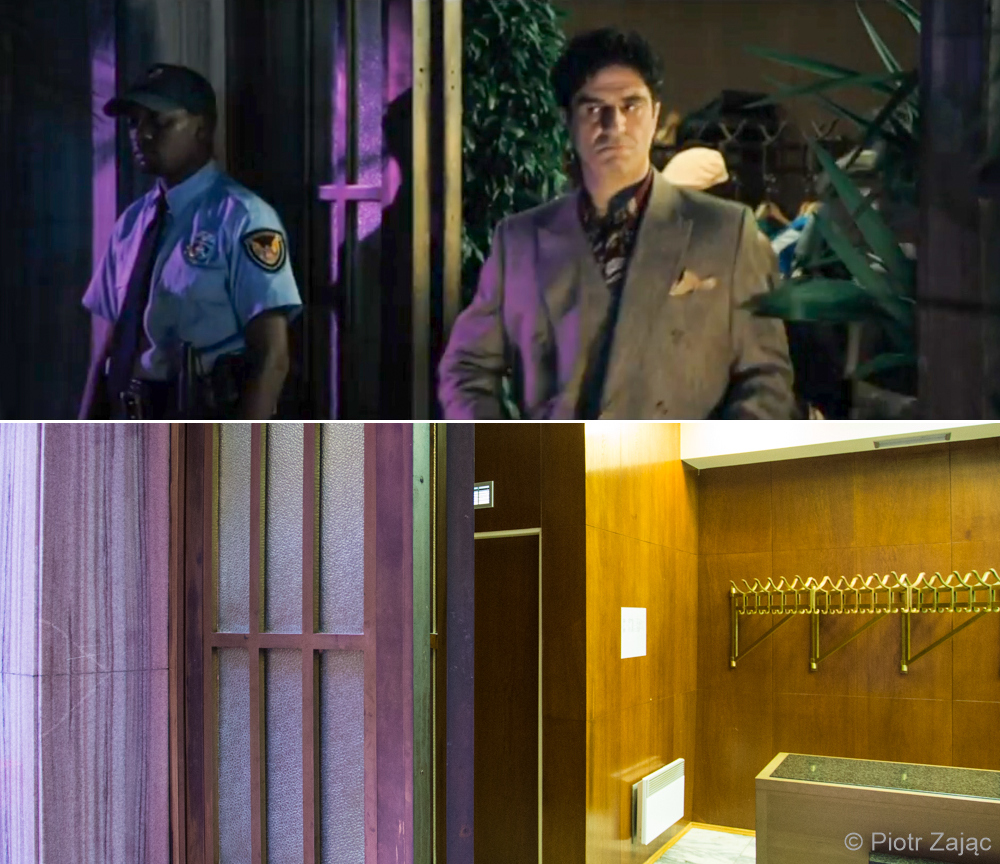
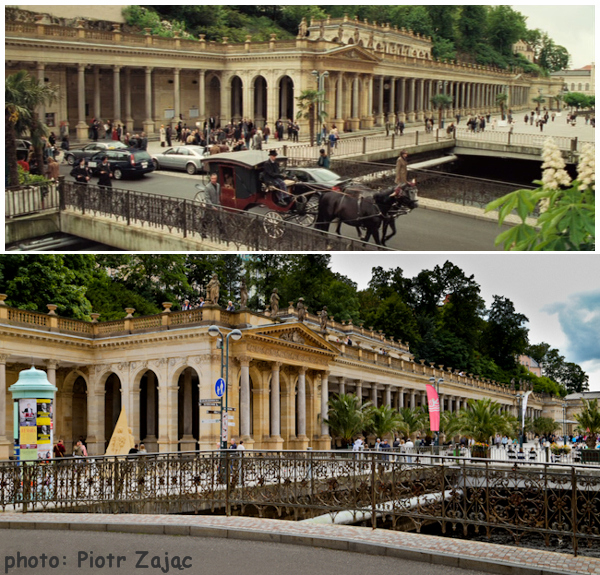
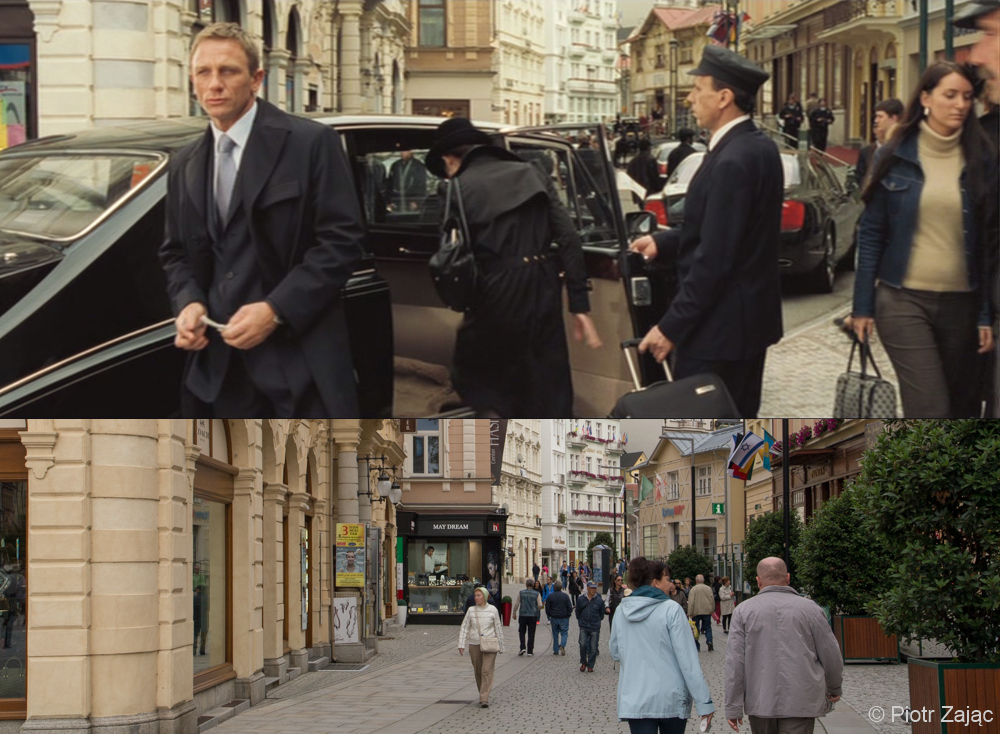
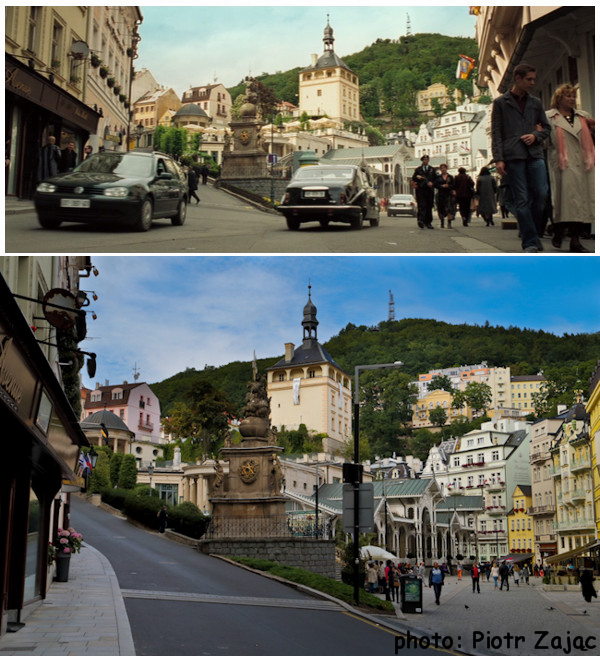
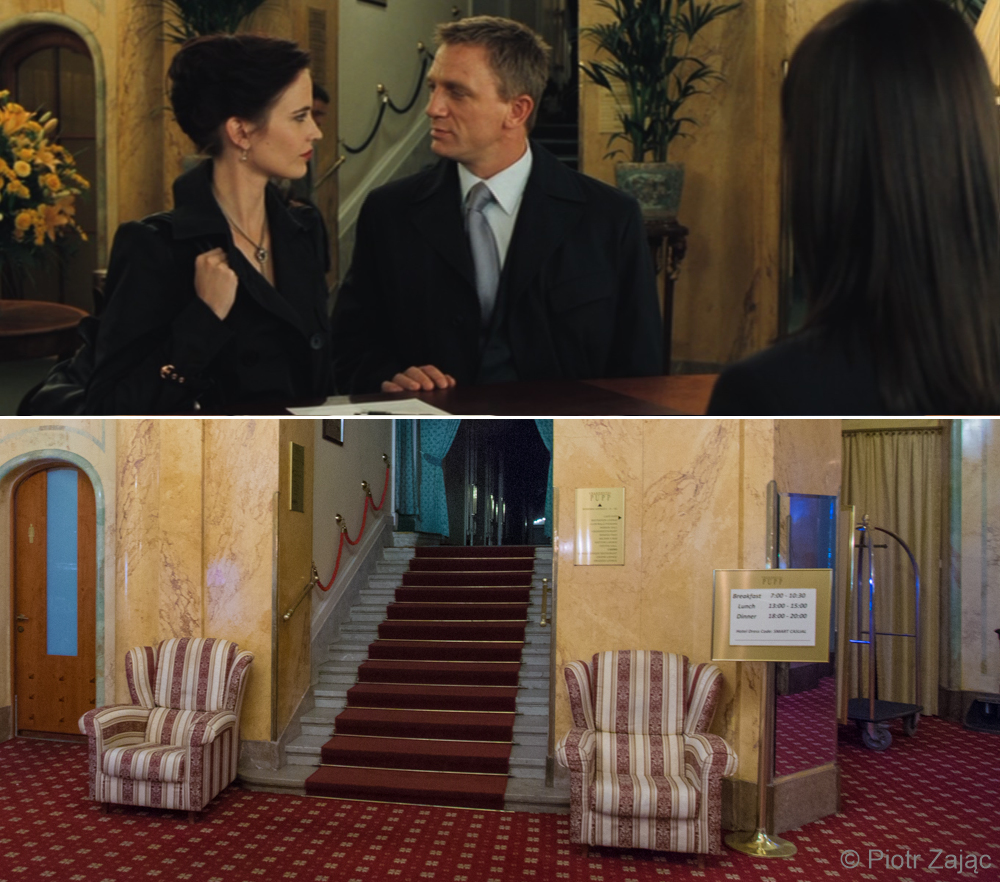
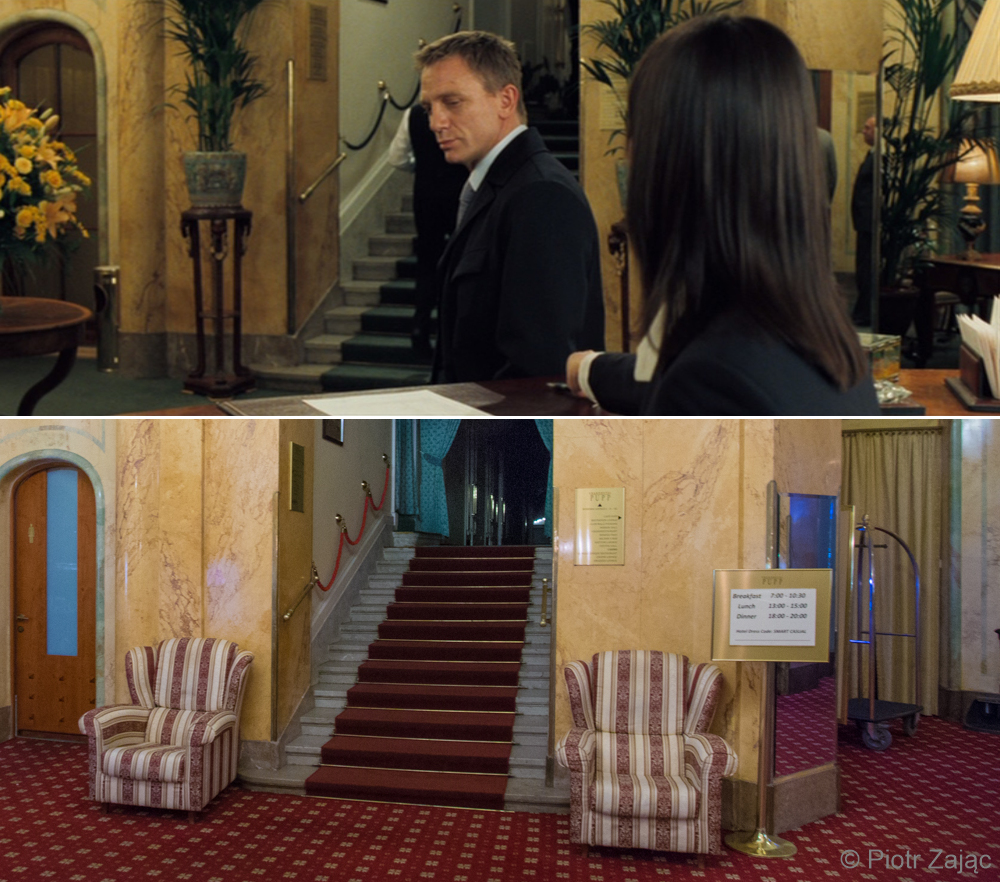
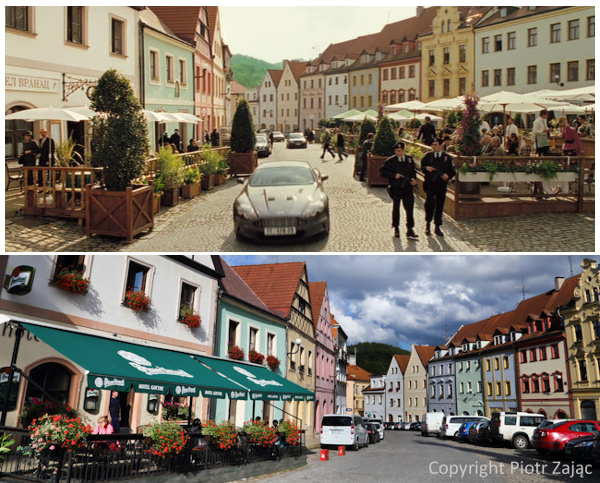
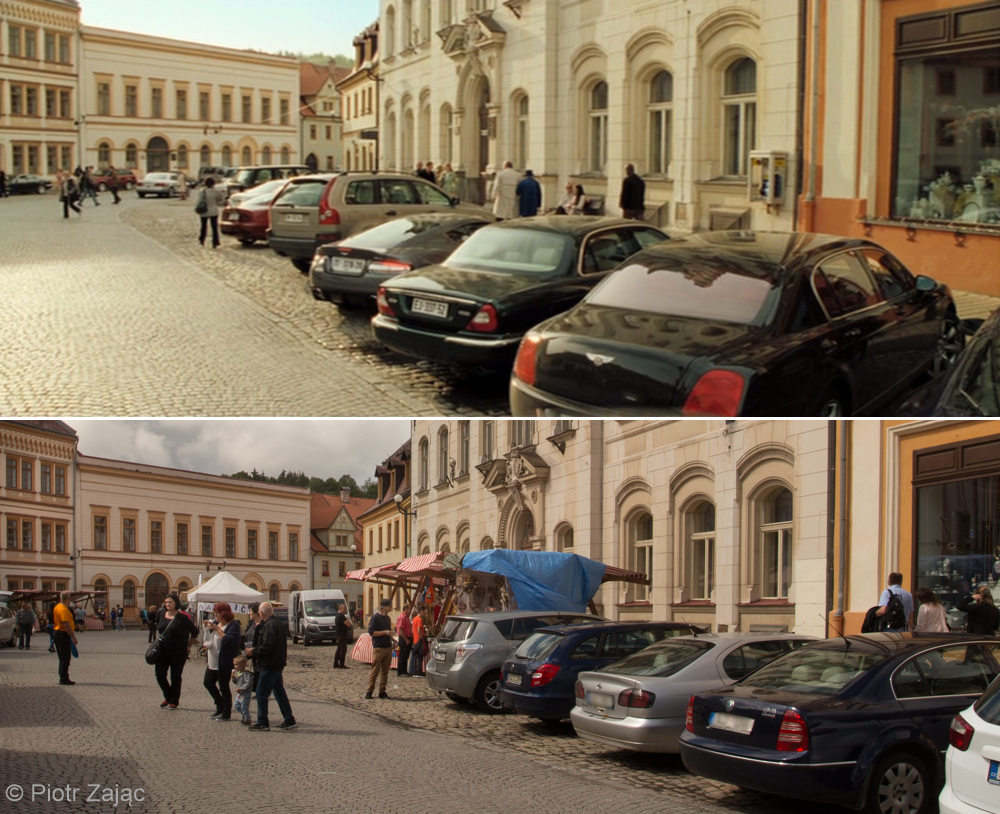
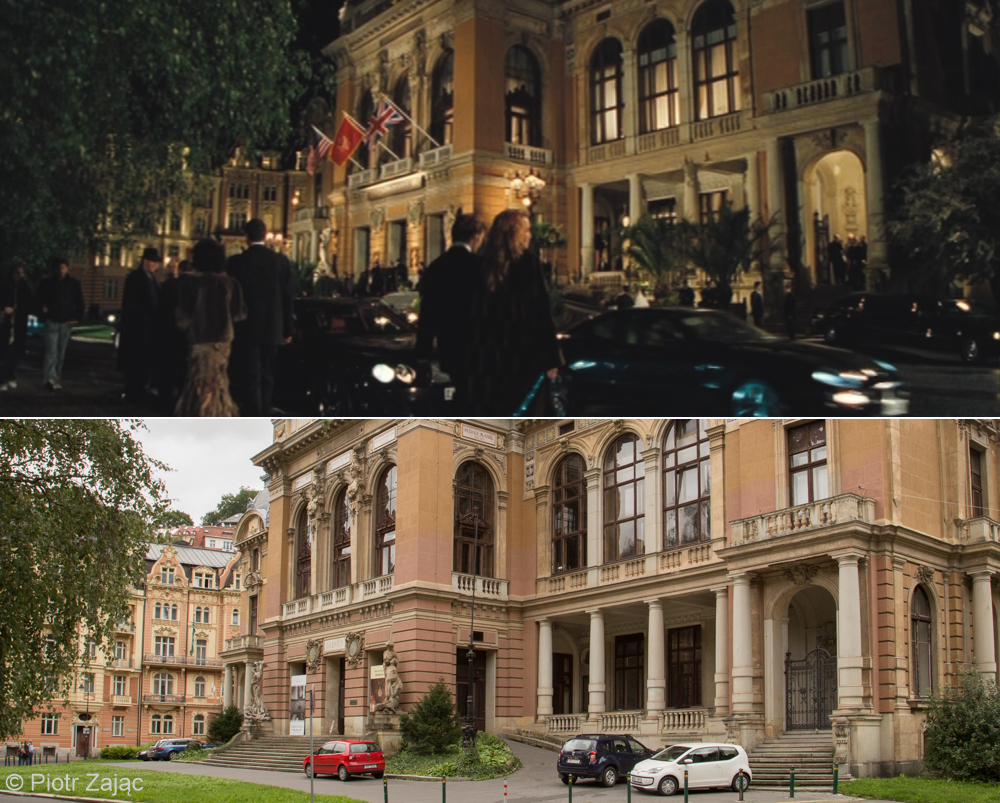
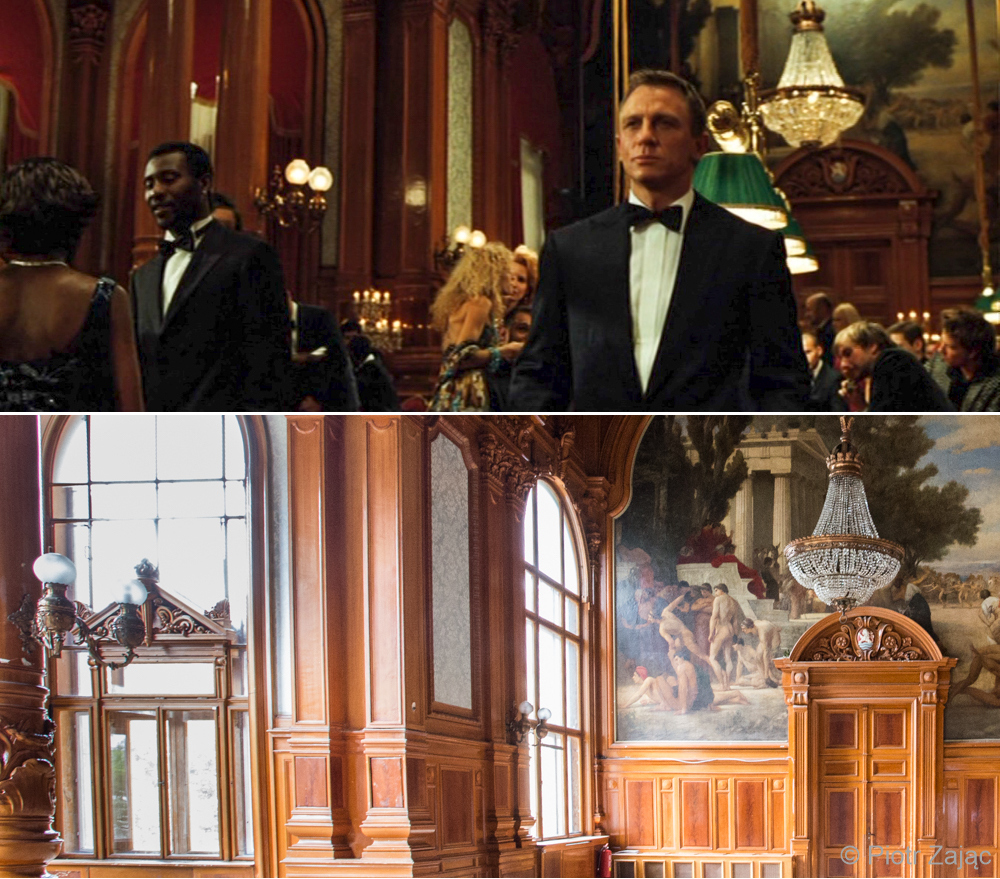
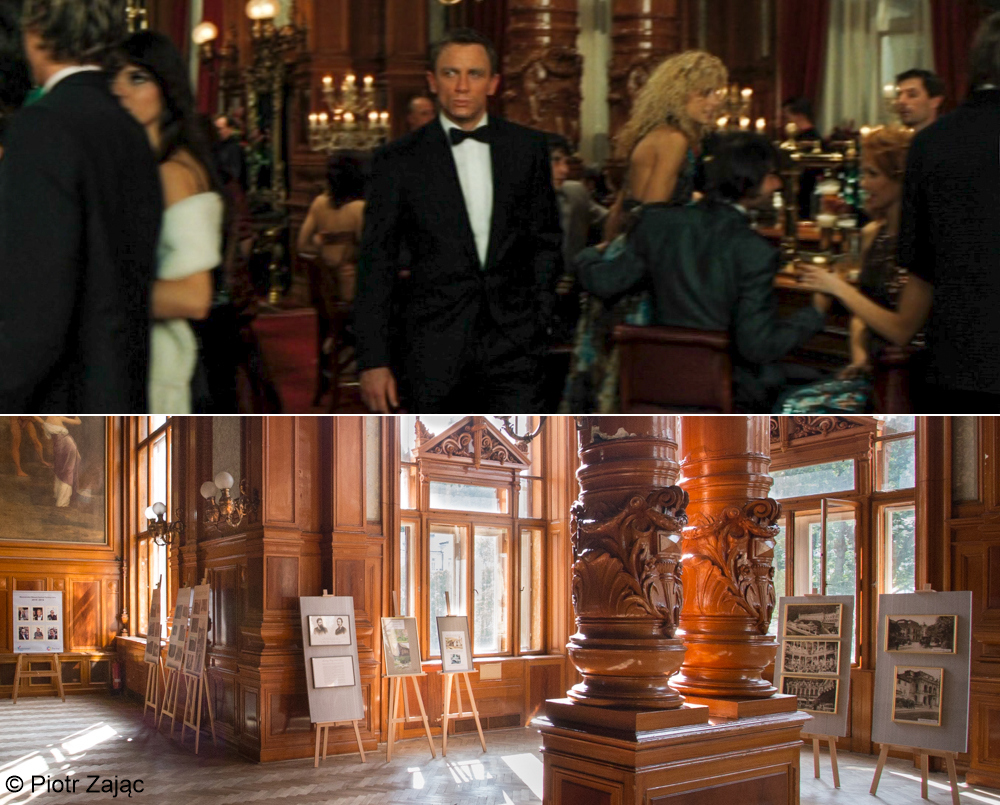
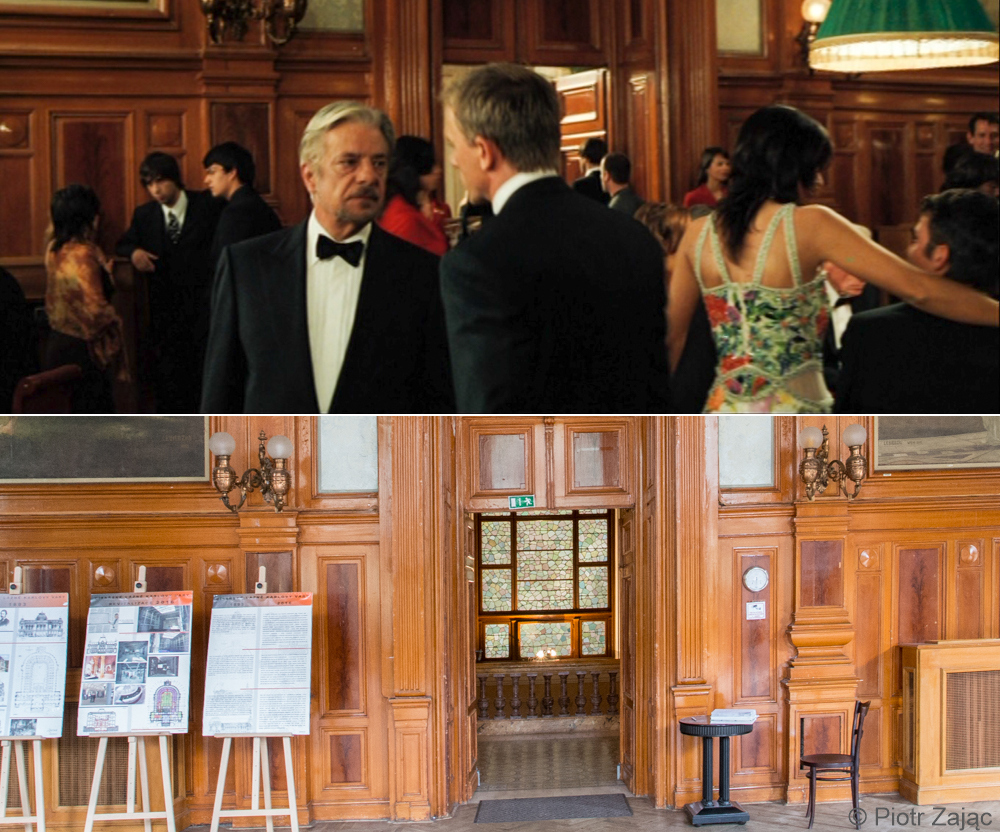
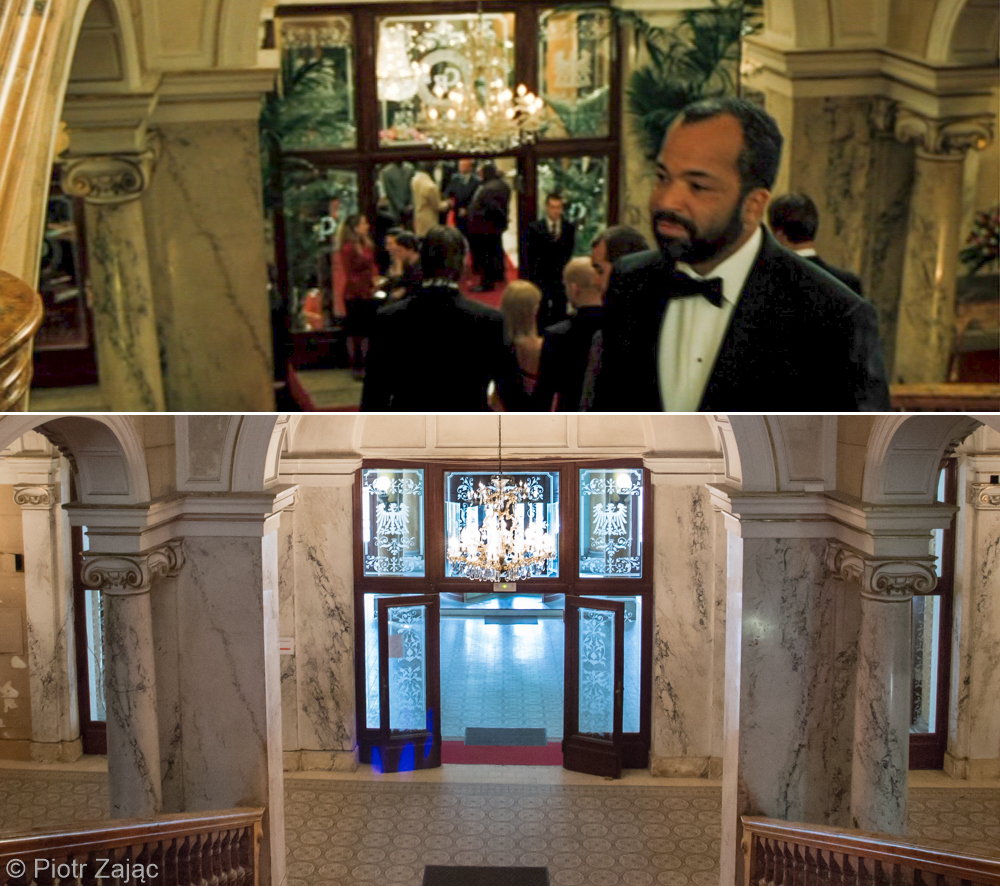
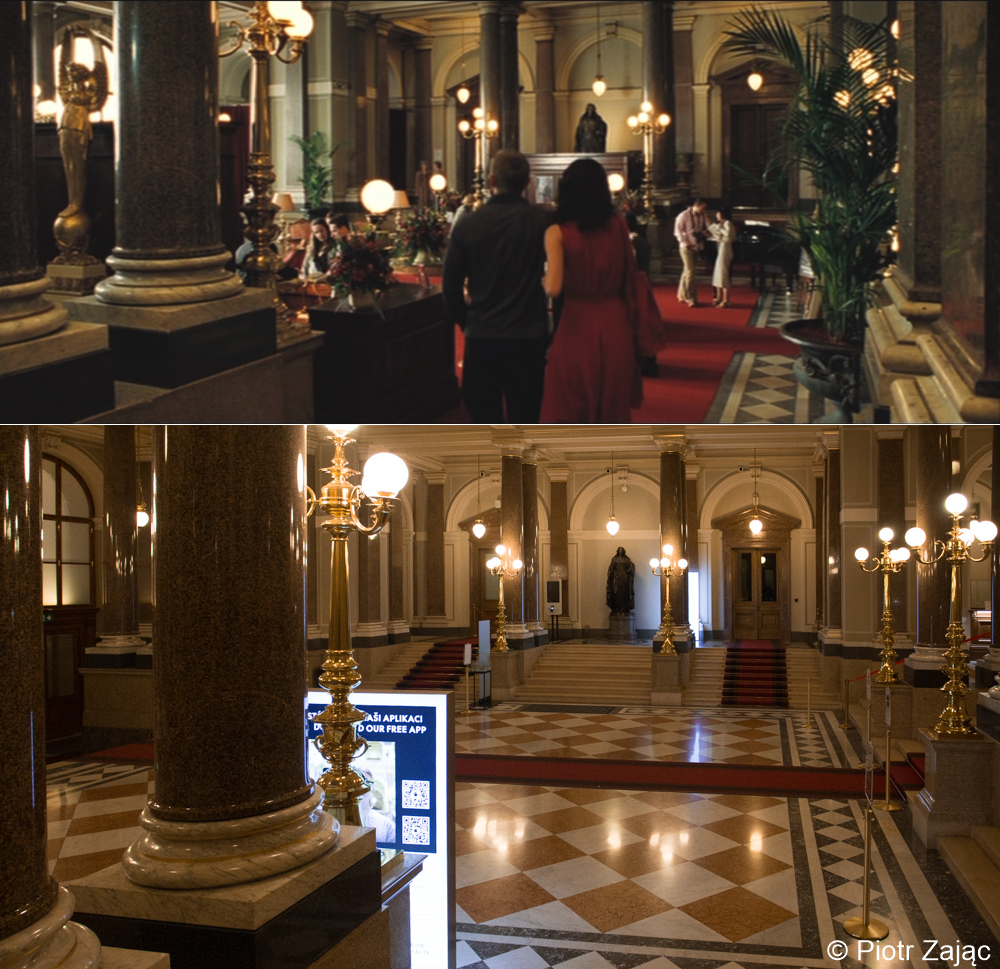
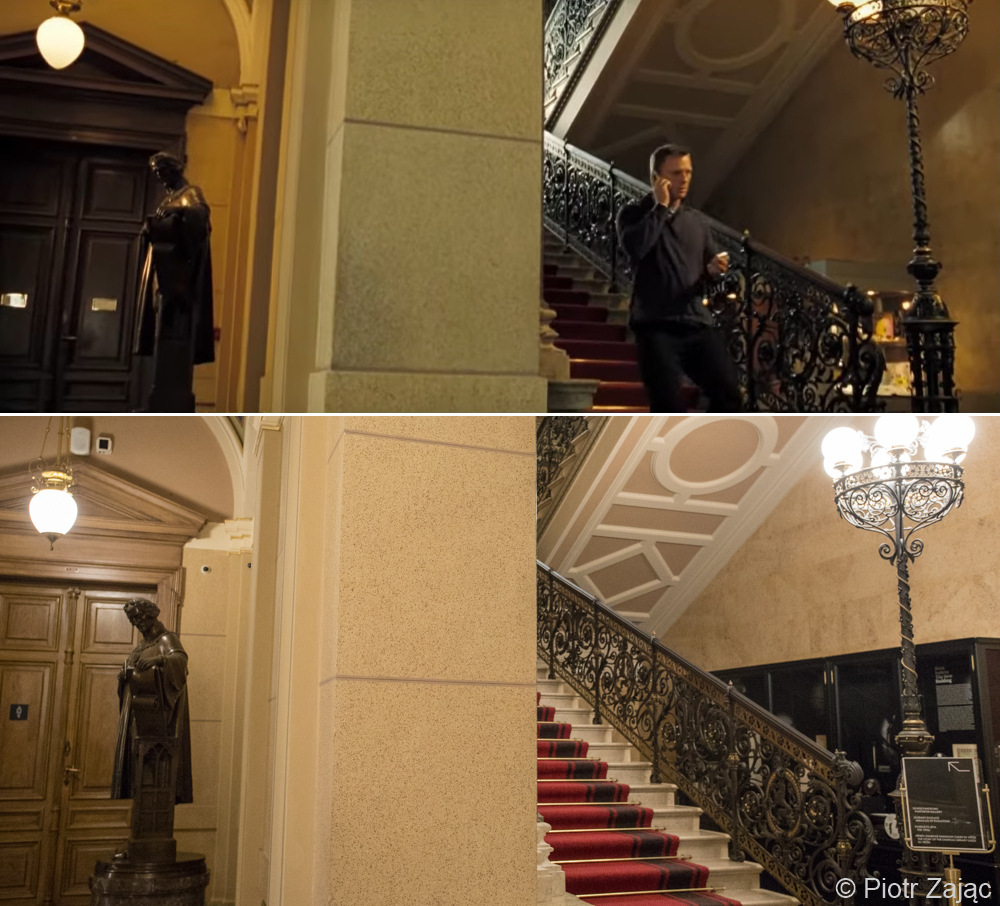
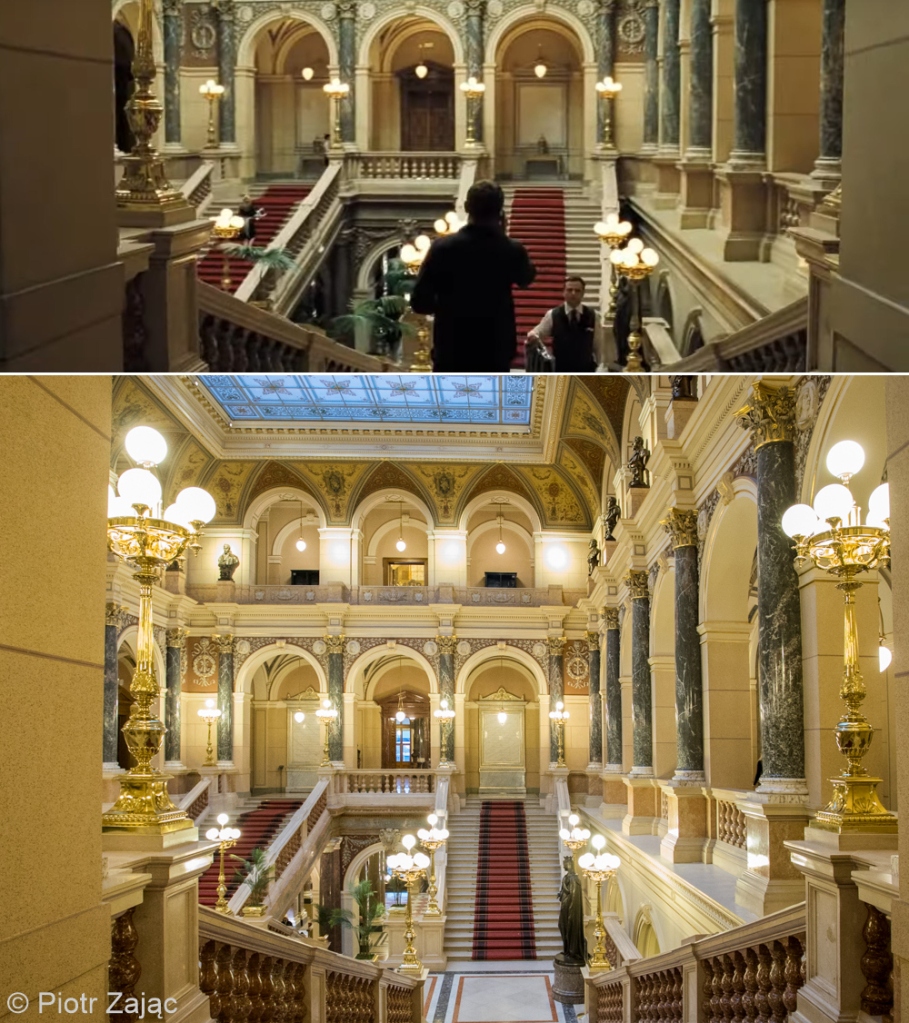
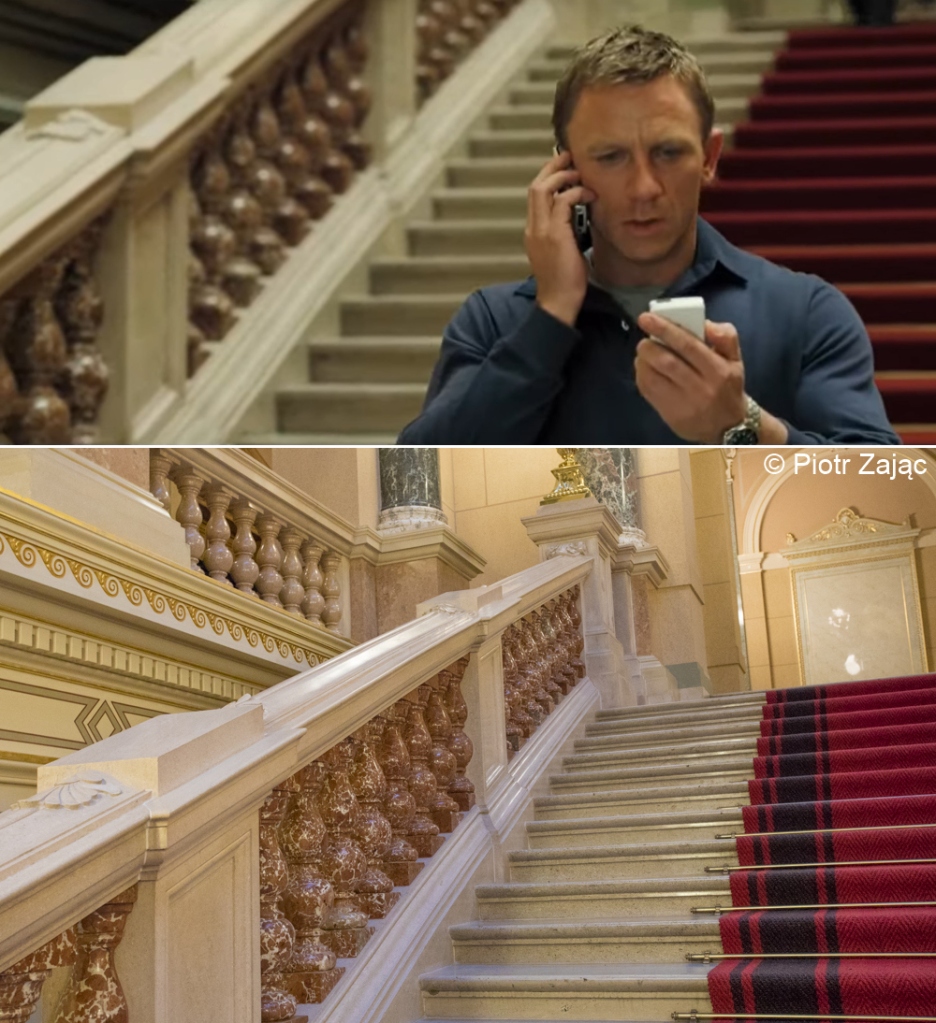
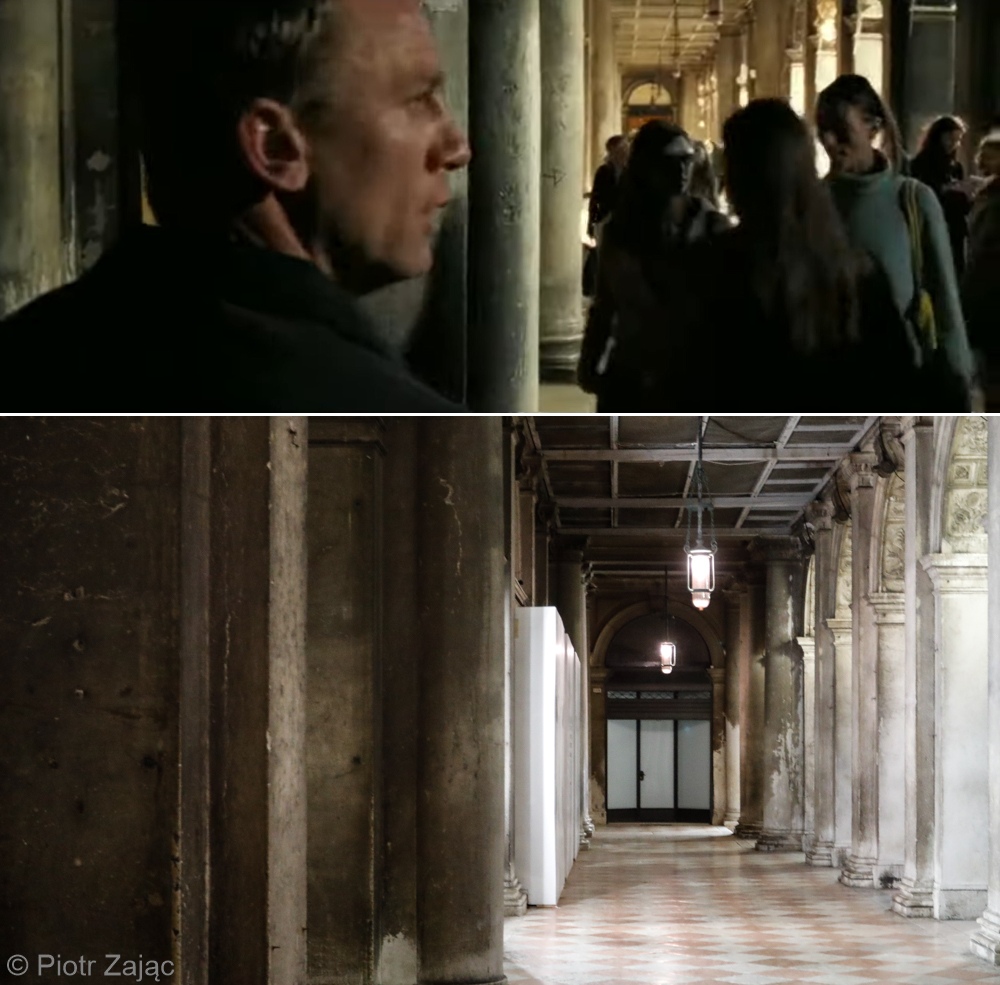
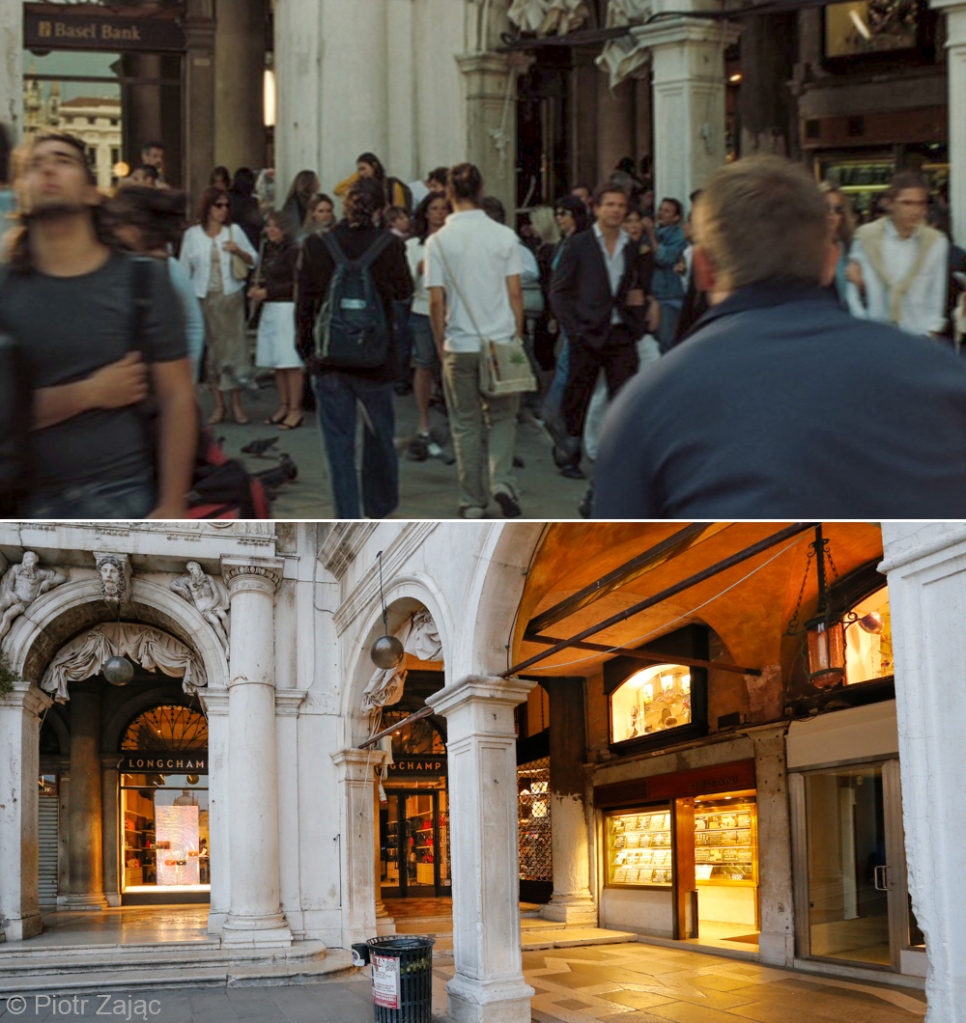
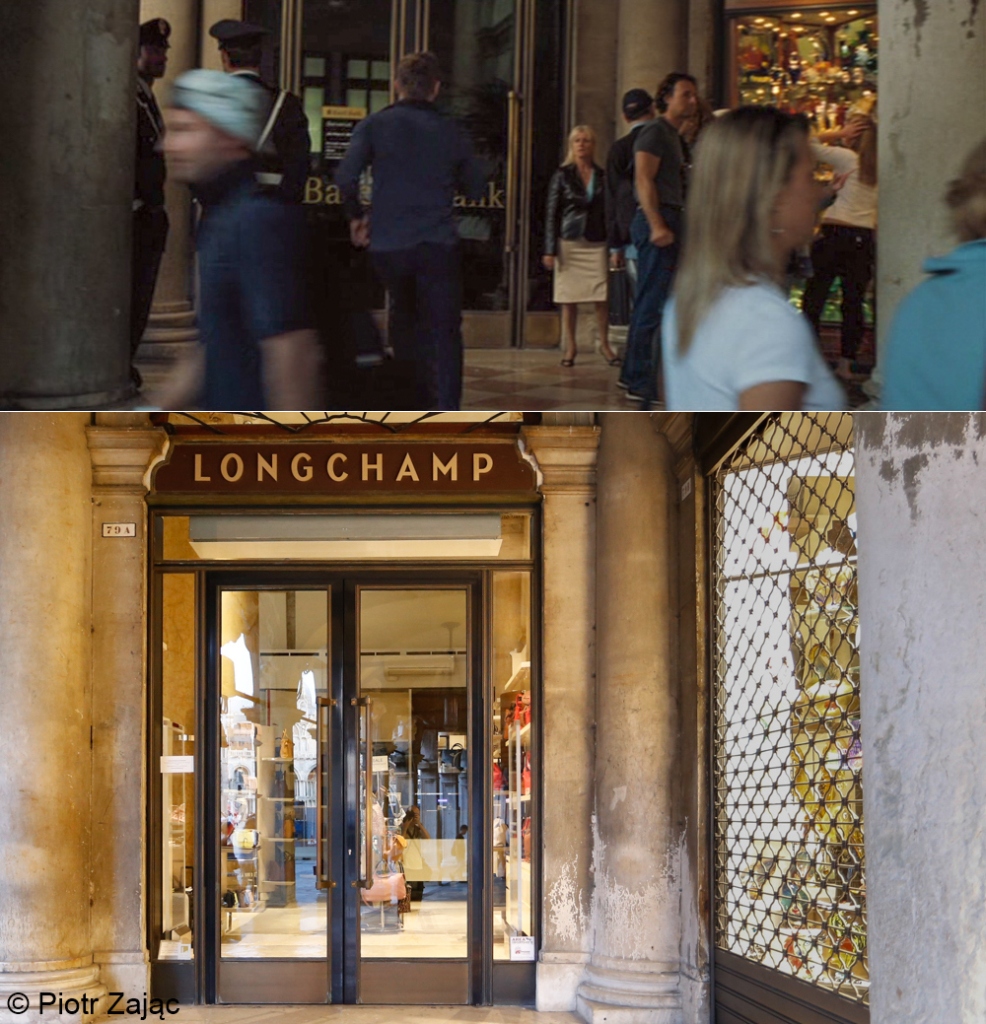
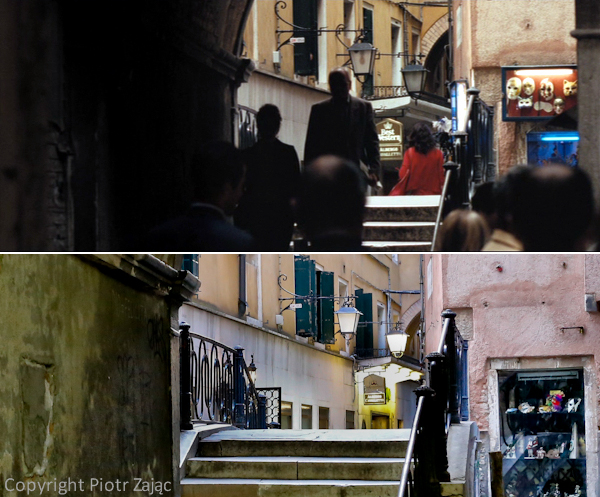
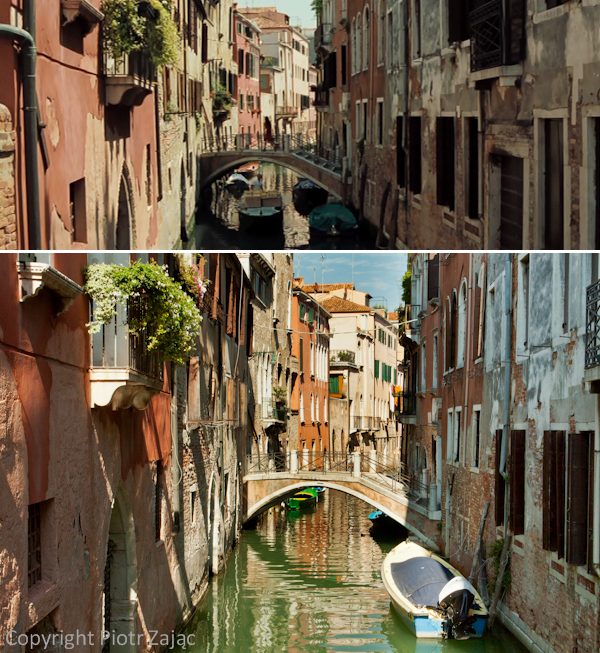
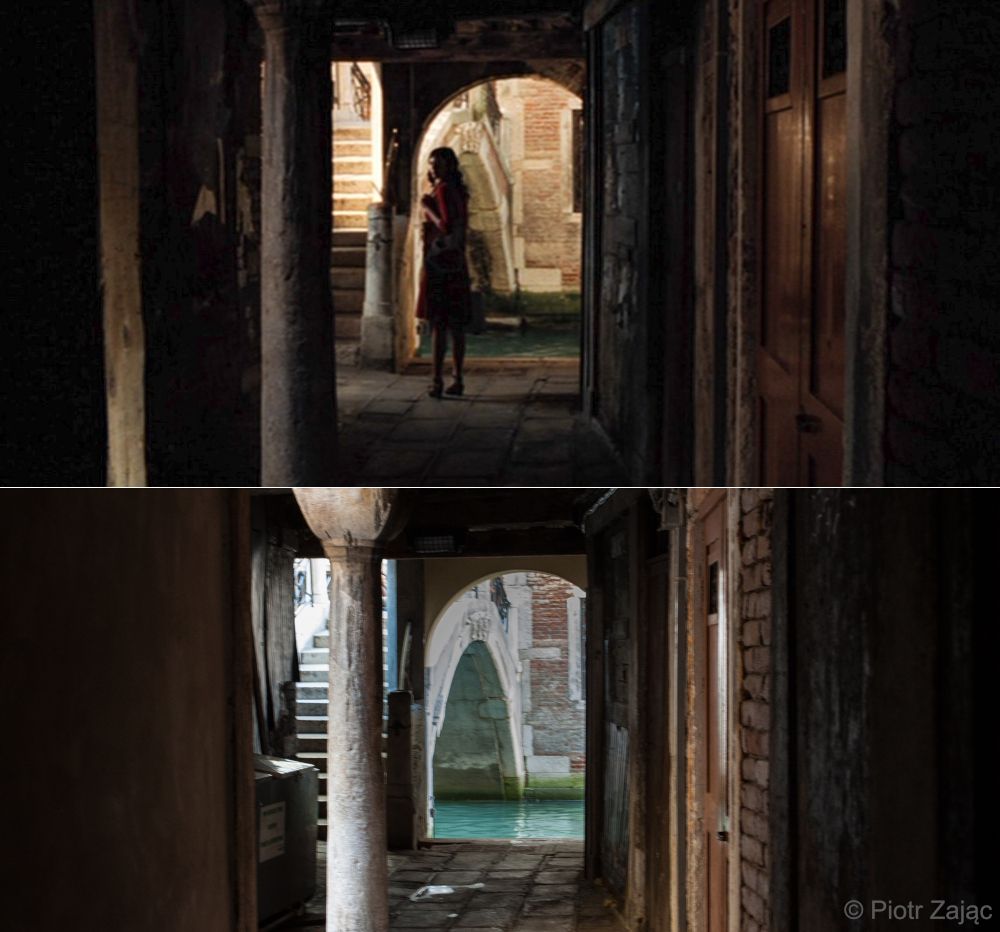
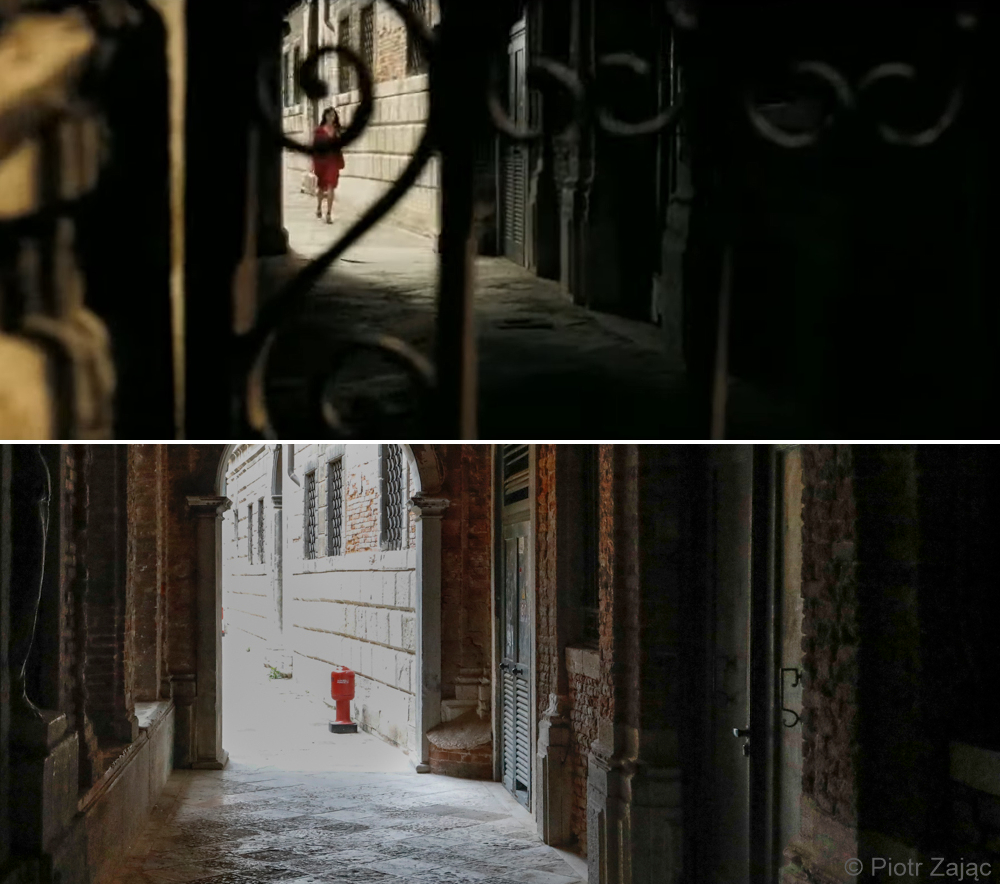
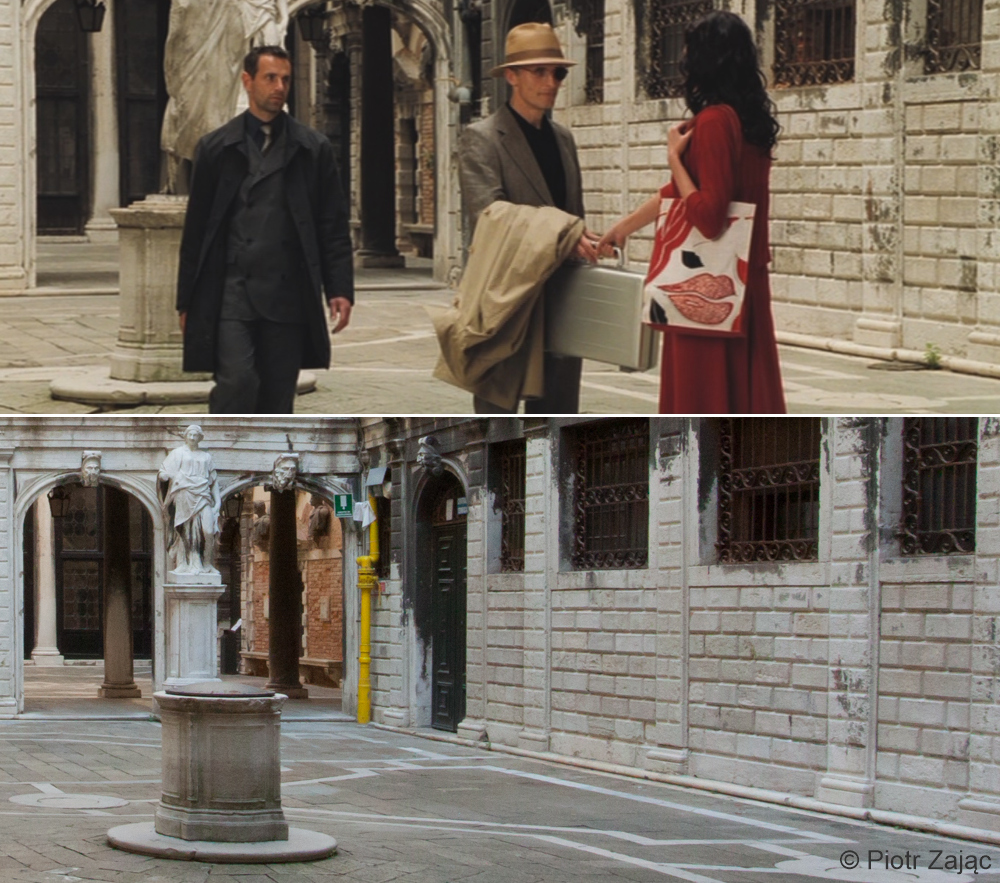
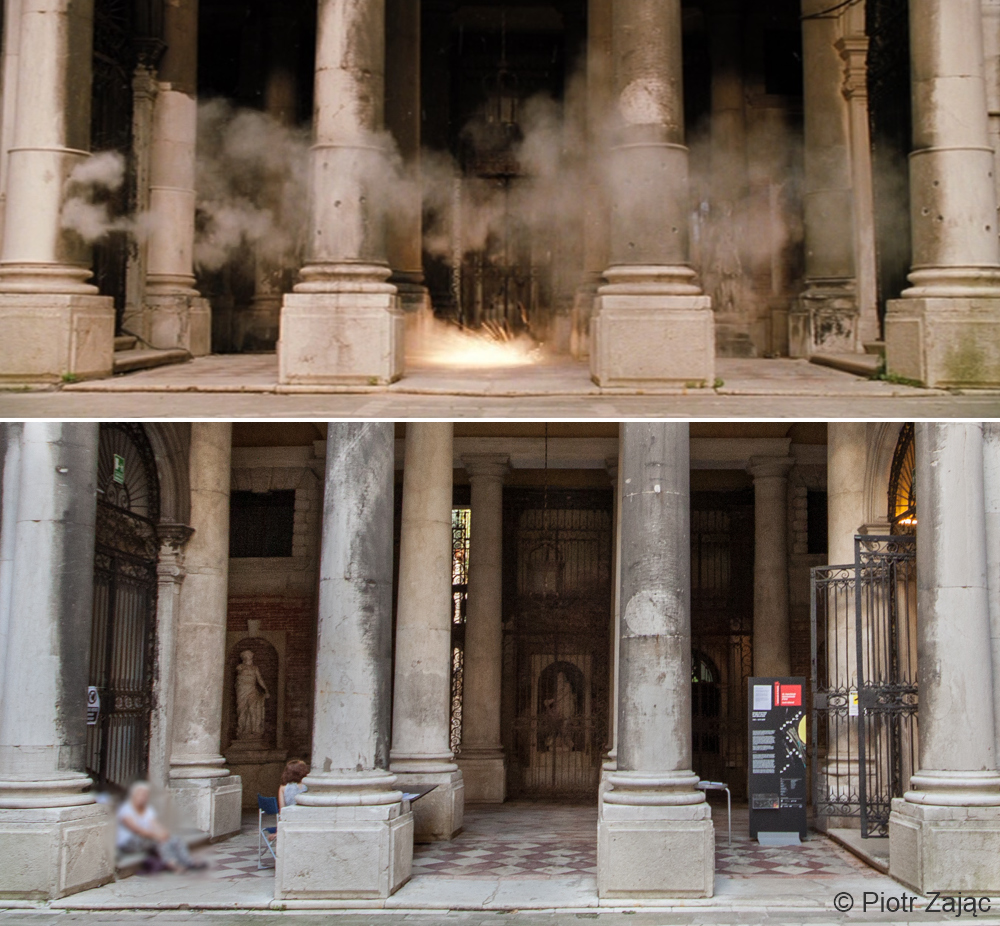
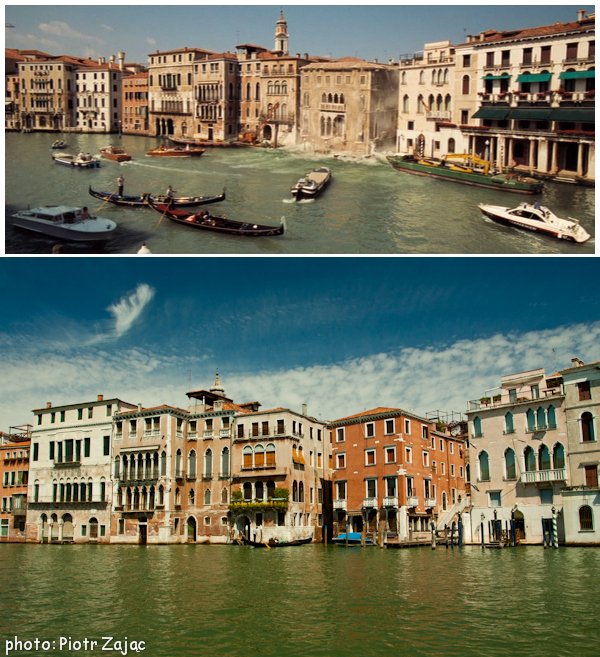
 Let’s begin the tour from small square called Piazzetta dei Leoncini next to St Mark’s Basilica and the north corner of St Mark’s Square. You will find there Venini shop, known from ‘Moonraker’.
Let’s begin the tour from small square called Piazzetta dei Leoncini next to St Mark’s Basilica and the north corner of St Mark’s Square. You will find there Venini shop, known from ‘Moonraker’. It’s been 40 years already since Roger Moore as James Bond entered Venini Glass, but not many detailes have changed. There is no sunblind above the antrance to the shop as in the movie and the door has been moved a bit, but every Bond fan will recognize that place.
It’s been 40 years already since Roger Moore as James Bond entered Venini Glass, but not many detailes have changed. There is no sunblind above the antrance to the shop as in the movie and the door has been moved a bit, but every Bond fan will recognize that place. Next to the shop there is a clock tower called Torre dell’Orologio, that was filmed at the end of fight scene with James Bond and the villain Chang (Toshiro Suga), also in ‘Moonraker’.
Next to the shop there is a clock tower called Torre dell’Orologio, that was filmed at the end of fight scene with James Bond and the villain Chang (Toshiro Suga), also in ‘Moonraker’. When they were fighting, there was a live concert right below the tower. Chang
When they were fighting, there was a live concert right below the tower. Chang 
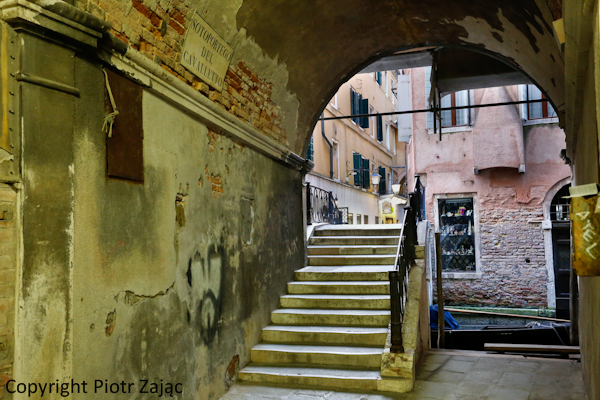 A few steps away in the
A few steps away in the  Through the window you can see interior of the shop that was designed as a bank lobby just for the film.
Through the window you can see interior of the shop that was designed as a bank lobby just for the film. Standing there you would notice that James Bond didn’t take the shortest route from the hotel to the bank. He ran into the square from its
Standing there you would notice that James Bond didn’t take the shortest route from the hotel to the bank. He ran into the square from its 
 Visit
Visit 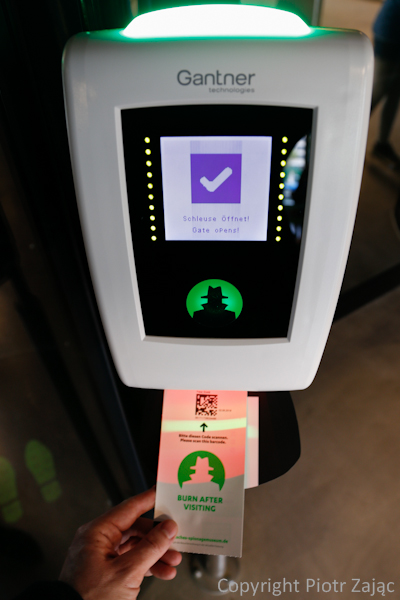


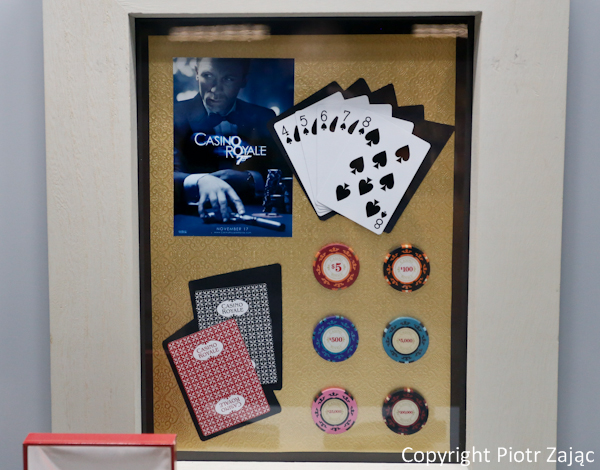











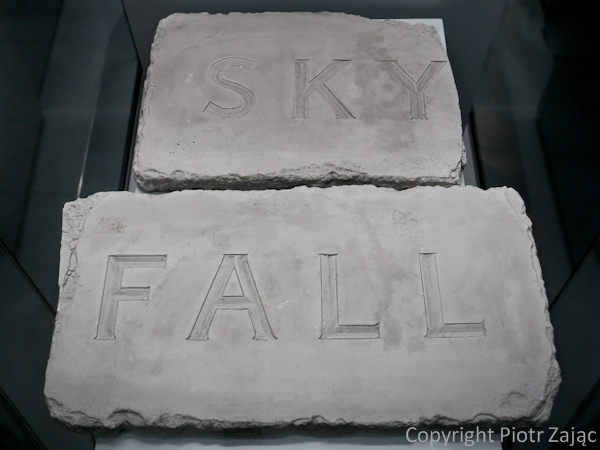











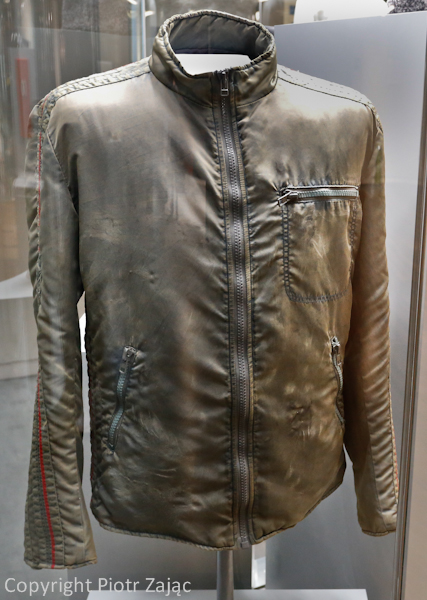





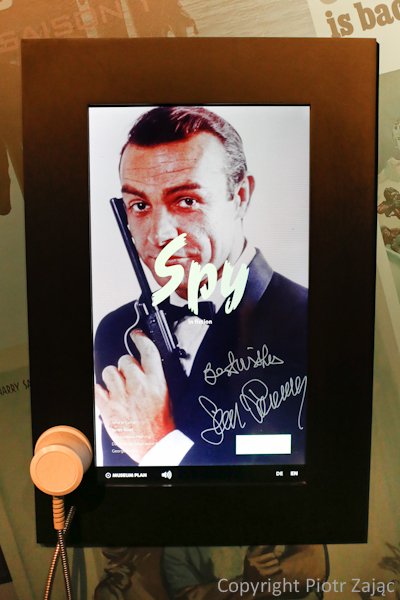
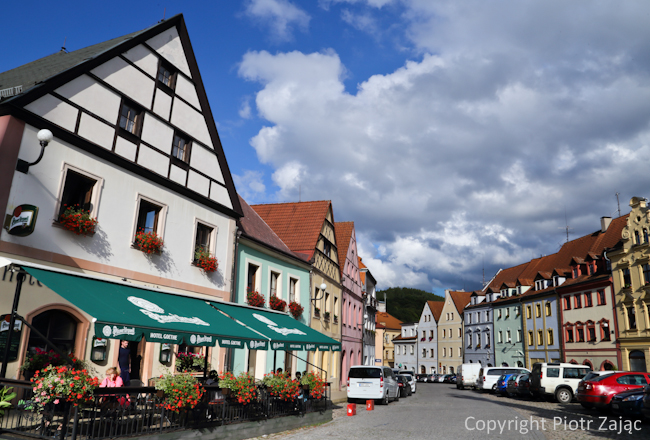 James Bond parked the car in front of the building with a bright facade (on the right in photo below).
James Bond parked the car in front of the building with a bright facade (on the right in photo below). 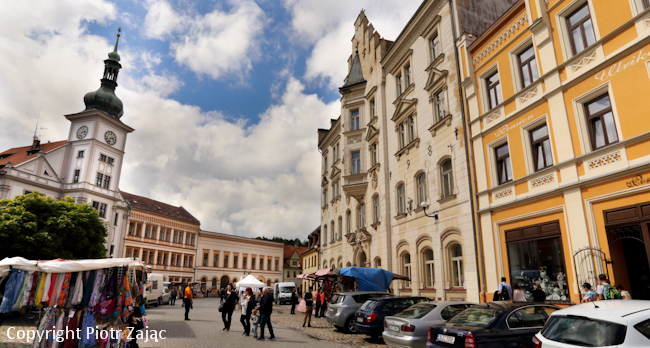
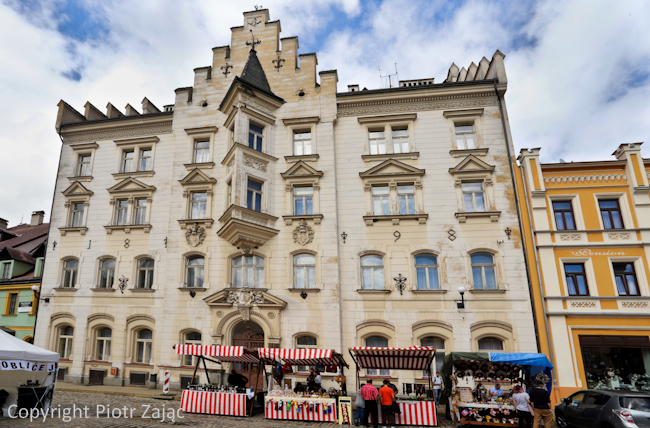 Restaurant zone where James Bond, Vesper Lynd and
Restaurant zone where James Bond, Vesper Lynd and 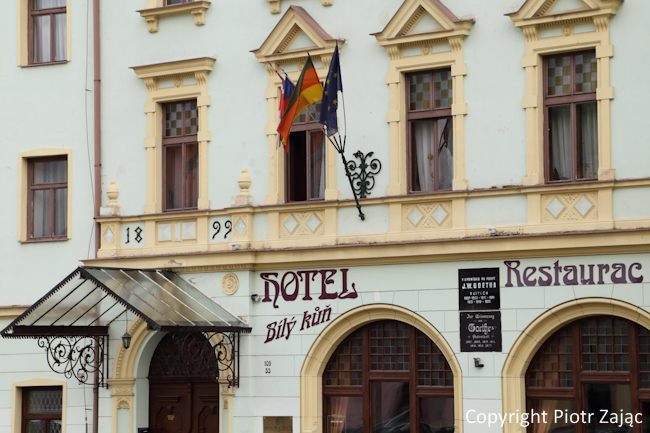 There is beautiful castle in Loket. It is worth to climb the tower with great view.
There is beautiful castle in Loket. It is worth to climb the tower with great view.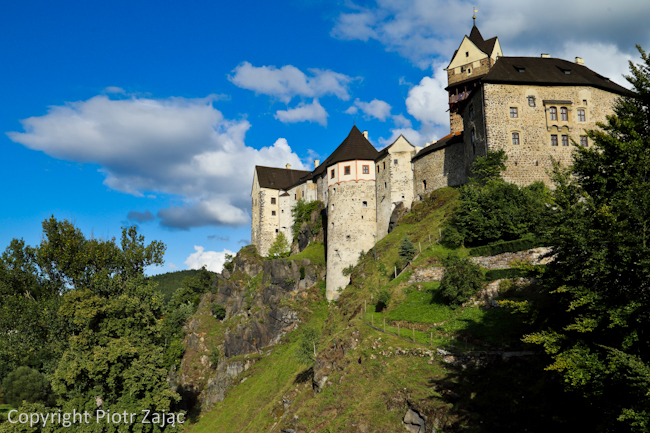
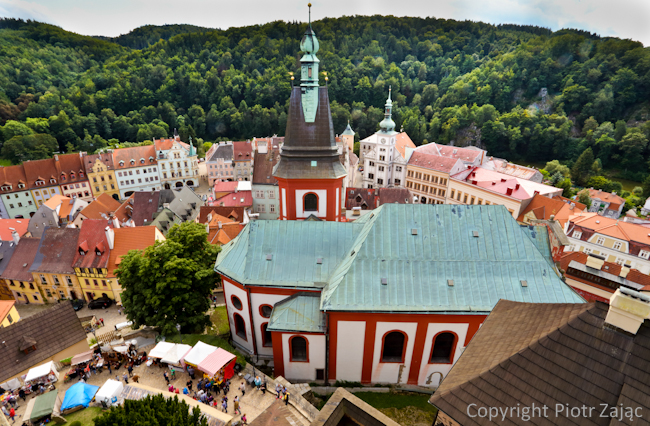 Between roofs you can see the facade of the
Between roofs you can see the facade of the 